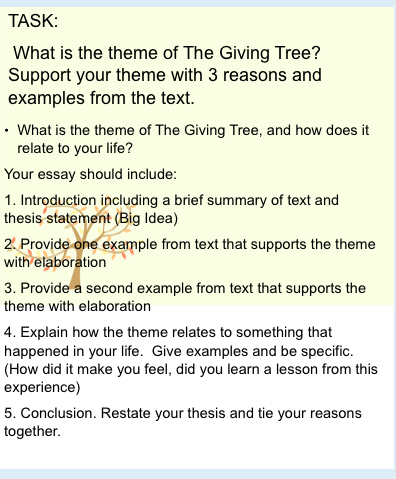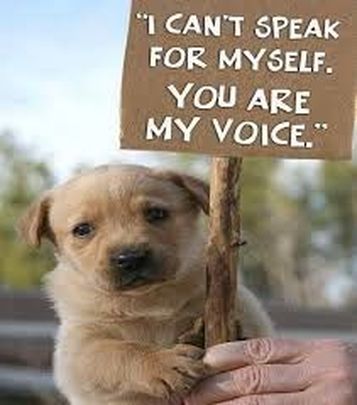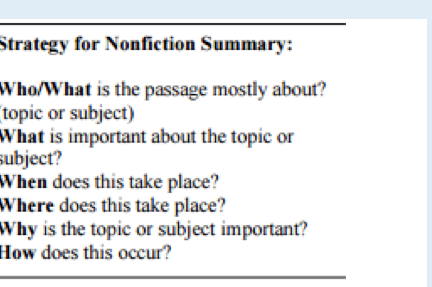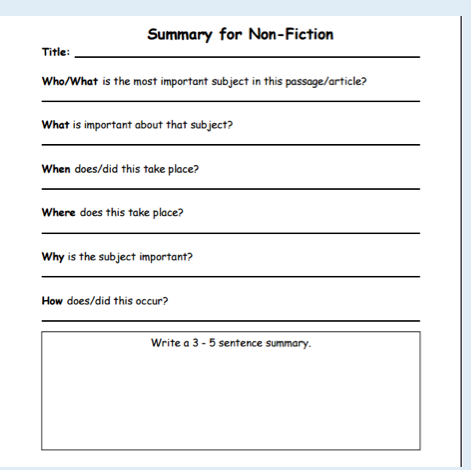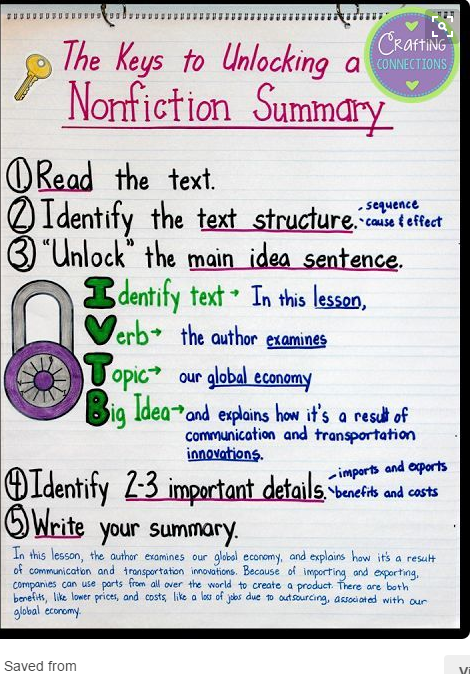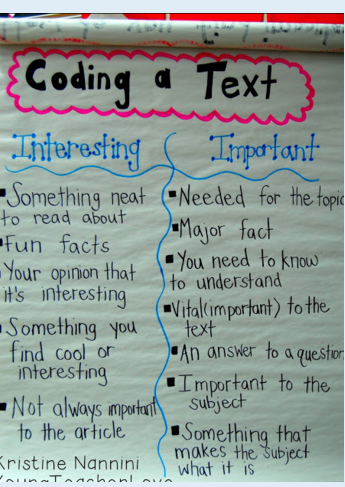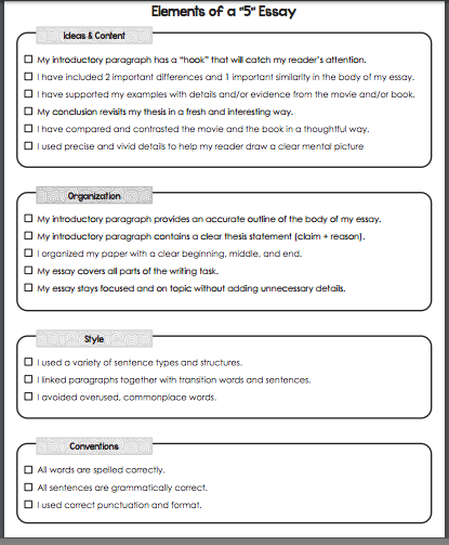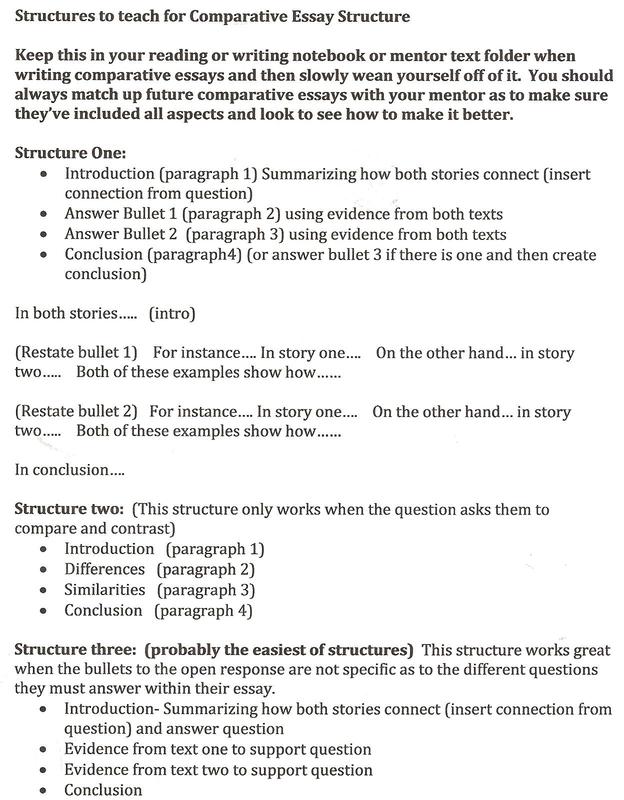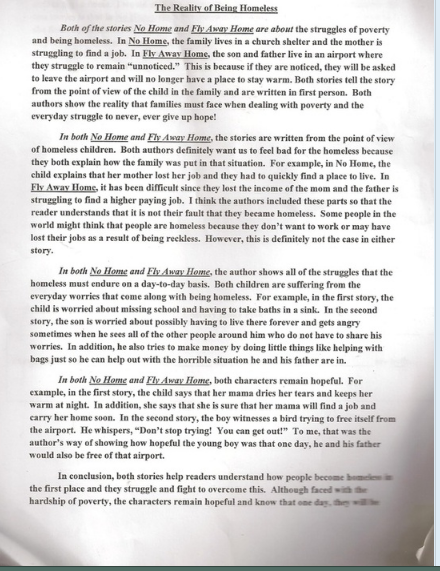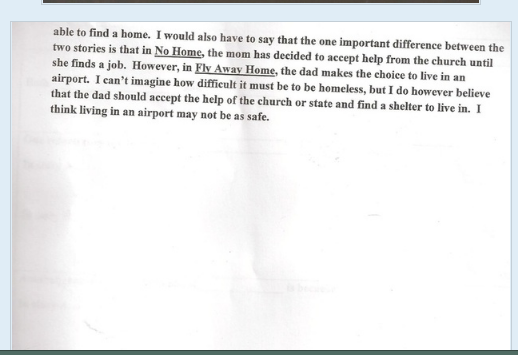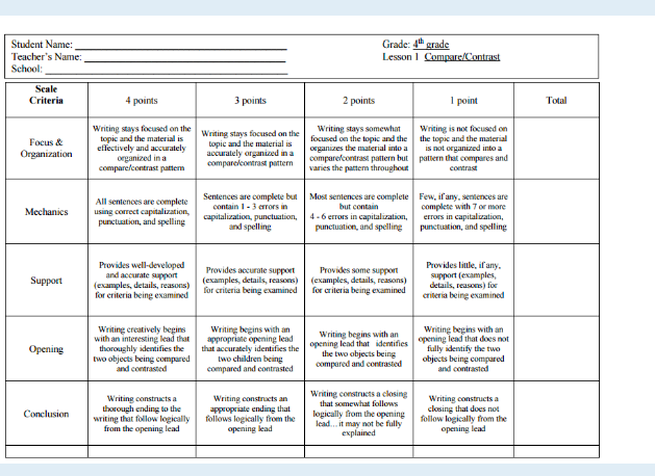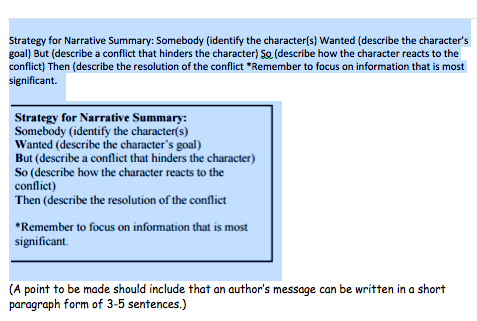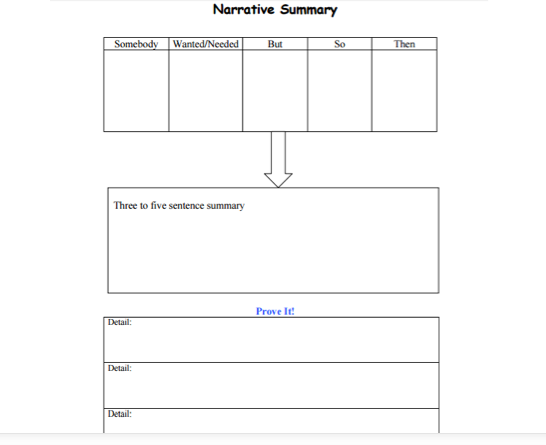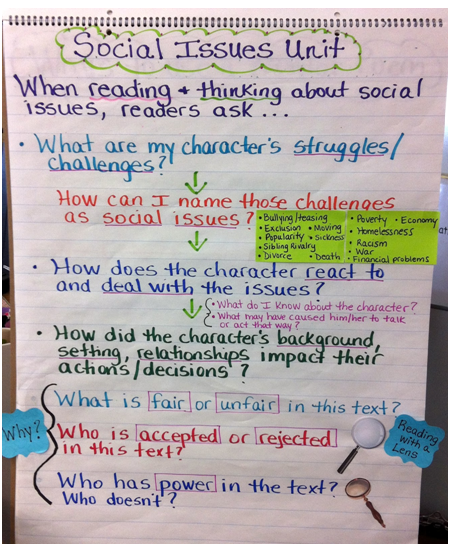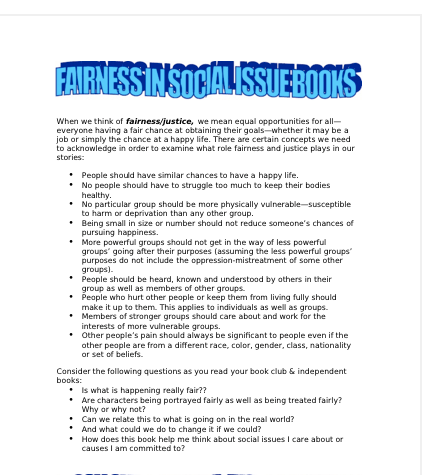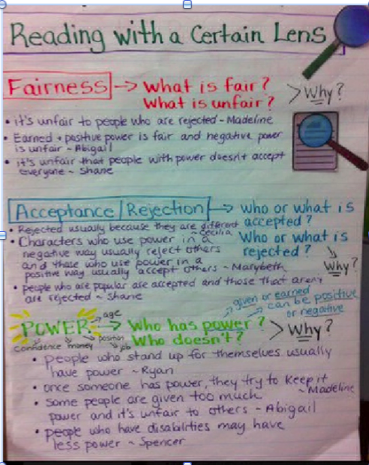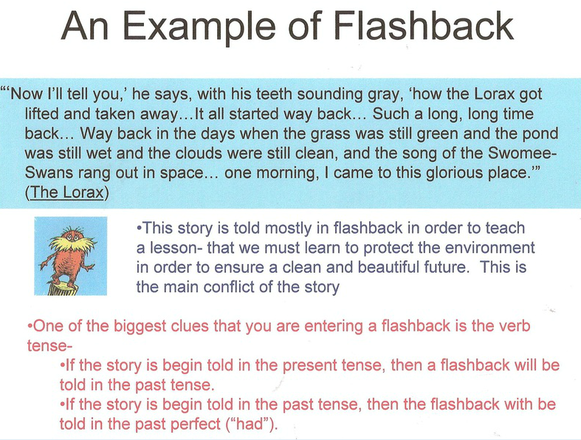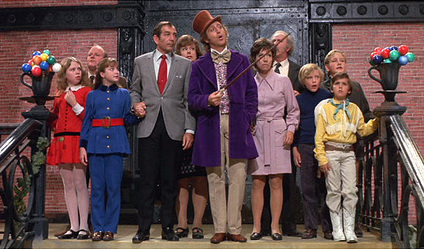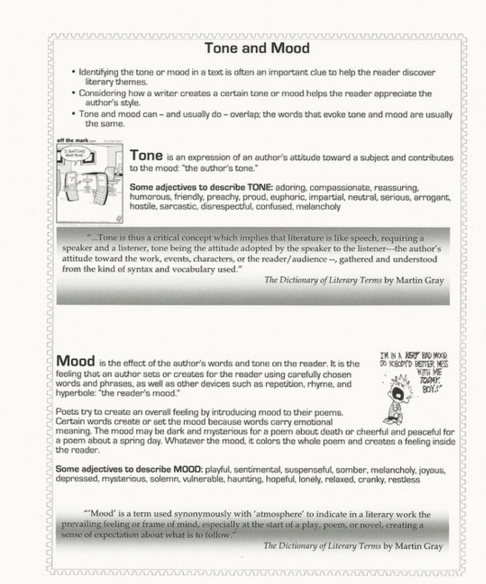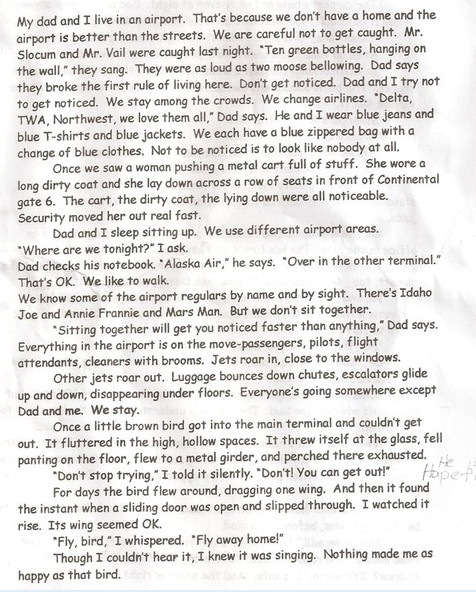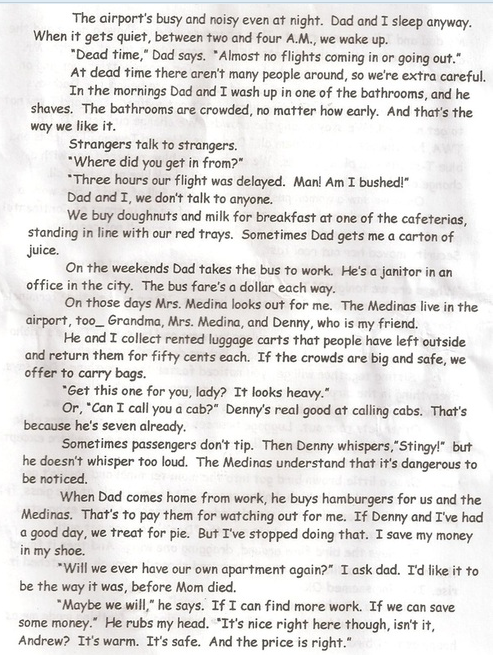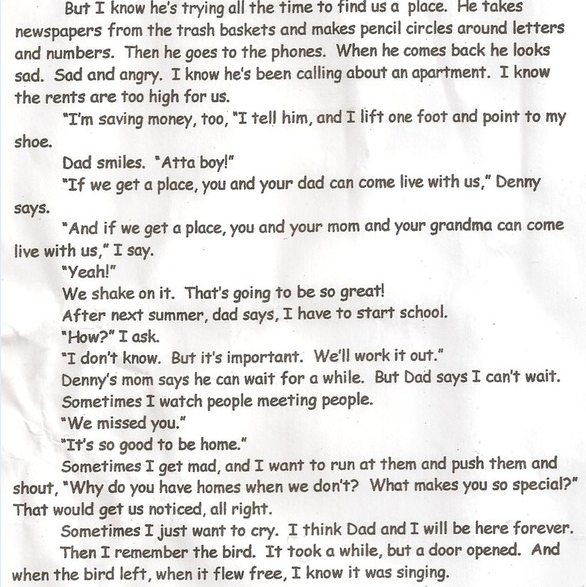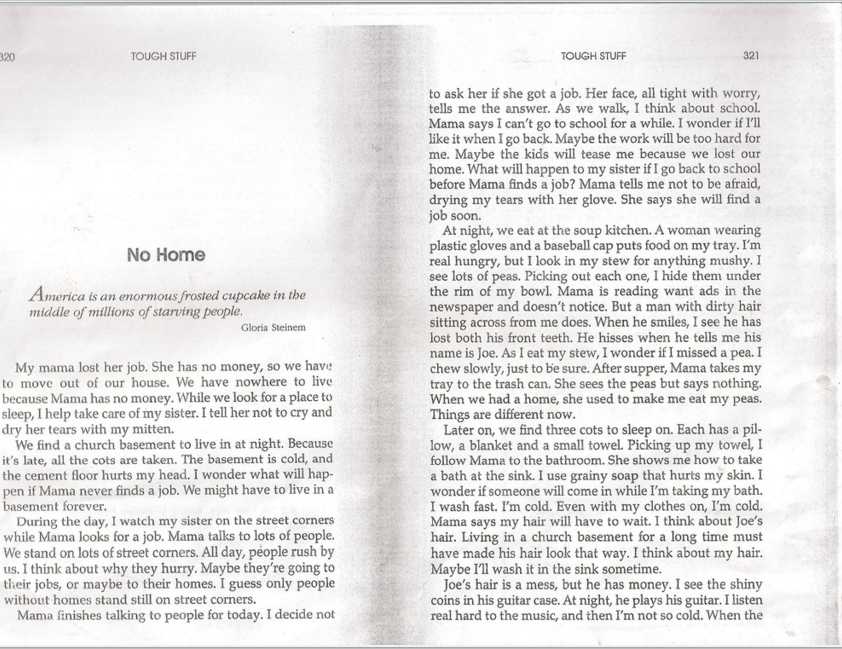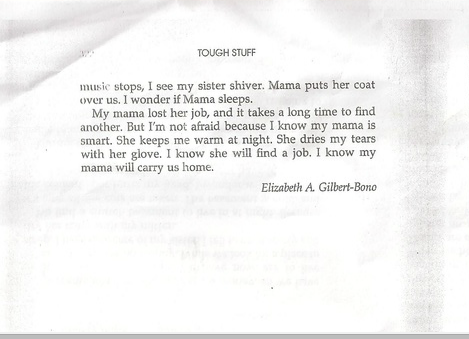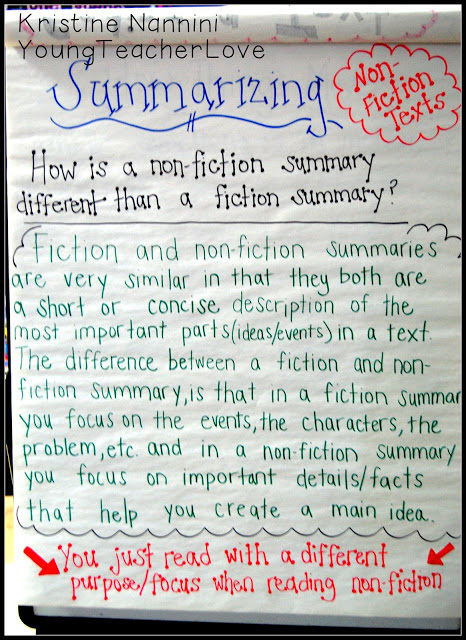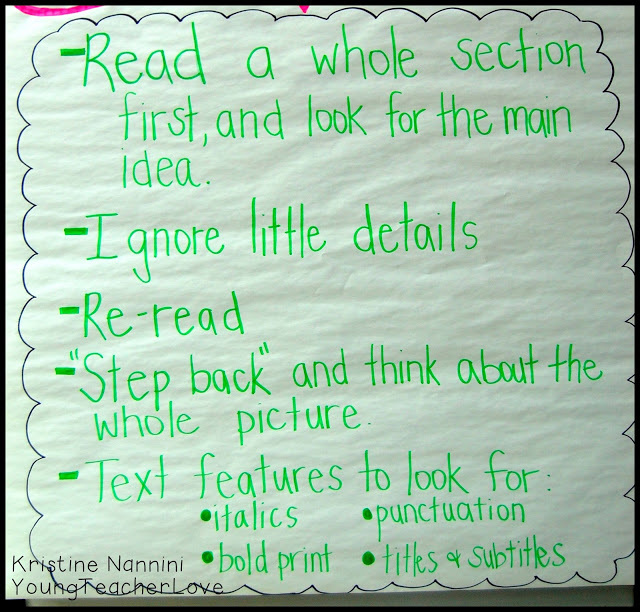EXTENDED METAPHOR: The term extended metaphor refers to a comparison between two unlike things that continues throughout a series of sentences in a paragraph or lines in a poem. It is often comprised of more than one sentence and sometimes consists of a full paragraph.
Description An extended metaphor is one where there is a single main subject to which additional subjects and metaphors are applied.
The extended metaphor may act as a central theme, for example where it is used as the primary vehicle of a poem and is used repeatedly and in different forms.
Example He is the pointing gun, we are the bullets of his desire.
All the world's a stage and men and women merely players.
Let me count my loves of thee, my rose garden, my heart, my fixed mark, my beginning and my end.
Discussion The power of an extended metaphor is in the hammer blows that it applies, demonstrating the passion and commitment of the author.
Done well, an extended metaphor drives the point home. Done badly, it either confuses people, for example through conflicting vehicles, or annoys them, for example through excessive elaboration or too many metaphors for a single subject.
Metaphors are very effective ways of developing ideas in poems; one special form, the "extended metaphor," can be particularly effective in certain situations. An extended metaphor is a comparison that provides the basis for an entire poem or for a lengthy section of a poem; its value lies in keeping the reader's attention focused on a single clear image while at the same time allowing the writer to develop a number of different aspects of an idea.
| i_am_a_roc1.doc | |
| File Size: | 26 kb |
| File Type: | doc |
think about how we analyzed Simon and Garfunkel's song, I am a Rock--an extended metaphor to describe loneliness. Now—begin working on your own analysis of any one of the following songs or choose a personal favorite:
Reach Out of the Darkness
Make Your Own Kind of Music
Windmills of Your Mind (Dusty Springfield)
Playgrounds of My Mind (Clint Holmes)
A Place in the Sun (Stevie Wonder)
The River (Garth Brooks)
Come Sail Away (Styx)
Rollercoaster (The Partridge Family)
I’m on the Road (Partridge Family)
Blackbird (Beatles)
I Hope You Dance (Leann Womack)
Dust in the Wind (Kansas)
Full Circle (Miley Cyrus)
Time for Me To Fly (Jonas Brothers)
I Believe I Can Fly (R Kelly)
The Circle of Life (Elton John-the Lion King soundtrack)
I’d Like to Teach the World to Sing (The New Seekers)
Top of the World (The Carpenters)
The Climb- (Miley Cyrus)
Reach Out of the Darkness
Make Your Own Kind of Music
Windmills of Your Mind (Dusty Springfield)
Playgrounds of My Mind (Clint Holmes)
A Place in the Sun (Stevie Wonder)
The River (Garth Brooks)
Come Sail Away (Styx)
Rollercoaster (The Partridge Family)
I’m on the Road (Partridge Family)
Blackbird (Beatles)
I Hope You Dance (Leann Womack)
Dust in the Wind (Kansas)
Full Circle (Miley Cyrus)
Time for Me To Fly (Jonas Brothers)
I Believe I Can Fly (R Kelly)
The Circle of Life (Elton John-the Lion King soundtrack)
I’d Like to Teach the World to Sing (The New Seekers)
Top of the World (The Carpenters)
The Climb- (Miley Cyrus)
- Who is the speaker in the poem? Explain your answer.
- What is the tone of the poem? (How does the speaker feel?) Give a specific example from the poem to support your answer.
- What is the mood of the poem? (How does it make you feel?) Explain your answer.
- Are alliteration and-or onomatopoeia present in the poem? If so, give examples from the poem of each device.
- Are similes, metaphor and-or personification present in the poem? If so, give examples.
- Is imagery (picture painting language that appeal to the five senses) present in the poem? If so, give specific examples to support each sense.
- What is the theme of the poem? Explain your answer with specific examples.
- What is the extended metaphor? Give three specific examples from the poem that support the extended metaphor.
- Explain how the extended metaphor supports the theme.
THE GIVING TREE:
| the_giving_tree__1_.docx | |
| File Size: | 118 kb |
| File Type: | docx |
| givingtreeessay.docx | |
| File Size: | 293 kb |
| File Type: | docx |
| givingtreeessayrubric.doc | |
| File Size: | 39 kb |
| File Type: | doc |
ALTERNATE TASK:
ANIMAL ISSUES FINAL-DUE TUESDAY, JUNE 13:
| final_animal_issues_book_club_packet.docx | |
| File Size: | 16 kb |
| File Type: | docx |
ANIMAL ISSUES PART FIVE: DUE TUESDAY, JUNE 6
| animal_issues_book_clubs_packet5__3_.docx | |
| File Size: | 14 kb |
| File Type: | docx |
ANIMAL ISSUES PART FOUR: DUE THURSDAY, JUNE 1ST
| animal_issues4.docx | |
| File Size: | 14 kb |
| File Type: | docx |
ANIMAL ISSUES PART THREE: DUE FRIDAY, MAY 26
| animalissues3revised.docx | |
| File Size: | 18 kb |
| File Type: | docx |
ANIMAL ISSUES PART TWO: DUE MONDAY, MAY 22
| animalissuesbookclubsparttwo.docx | |
| File Size: | 18 kb |
| File Type: | docx |
ANIMAL ISSUES PART ONE: DUE THURSDAY, MAY 11
| animalissuespreviewpartone__2_.docx | |
| File Size: | 22 kb |
| File Type: | docx |
SOCIAL-ANIMAL ISSUES RUBRICS:
| bookclubrubric.docx | |
| File Size: | 14 kb |
| File Type: | docx |
| social_issues_book_clubs_rubric__1_.doc | |
| File Size: | 72 kb |
| File Type: | doc |
BOOK CLUB TWEETS-EXIT SLIPS:
| tweetexit.docx | |
| File Size: | 108 kb |
| File Type: | docx |
LET'S START EMBRACING OUR INNER JOHN BOY AND SEE THE EXTRAORDINARY IN "ORDINARY" PEOPLE, PLACES AND THINGS -I can develop my appreciation for poetry by identifying important elements of genre and by creating an original ode. What Are the Elements of Poetry?
| unit_poetryslam_ode.pdf | |
| File Size: | 244 kb |
| File Type: | |
GARY SOTO: ABOUT THE AUTHOR-www.scholastic.com/teachers/authors/gary-soto/
Your browser does not support viewing this document. Click here to download the document.
|
| ||||||||||||
MORE ODES TO SEEMINGLY ORDINARY PEOPLE, PLACES AND THINGS: twaingiftedandtalented.wikispaces.com/file/view/Poetry.Seeing+Objects+with+Fresh+Eyes.pdf
FAMOUS ODE TO A NIGHTINGALE:
FAMOUS ODE: Ode to a Nightingale
BY JOHN KEATS
My heart aches, and a drowsy numbness pains
My sense, as though of hemlock I had drunk,
Or emptied some dull opiate to the drains
One minute past, and Lethe-wards had sunk:
'Tis not through envy of thy happy lot,
But being too happy in thine happiness,—
That thou, light-winged Dryad of the trees
In some melodious plot
Of beechen green, and shadows numberless,
Singest of summer in full-throated ease.
O, for a draught of vintage! that hath been
Cool'd a long age in the deep-delved earth,
Tasting of Flora and the country green,
Dance, and Provençal song, and sunburnt mirth!
O for a beaker full of the warm South,
Full of the true, the blushful Hippocrene,
With beaded bubbles winking at the brim,
And purple-stained mouth;
That I might drink, and leave the world unseen,
And with thee fade away into the forest dim:
Fade far away, dissolve, and quite forget
What thou among the leaves hast never known,
The weariness, the fever, and the fret
Here, where men sit and hear each other groan;
Where palsy shakes a few, sad, last gray hairs,
Where youth grows pale, and spectre-thin, and dies;
Where but to think is to be full of sorrow
And leaden-eyed despairs,
Where Beauty cannot keep her lustrous eyes,
Or new Love pine at them beyond to-morrow.
Away! away! for I will fly to thee,
Not charioted by Bacchus and his pards,
But on the viewless wings of Poesy,
Though the dull brain perplexes and retards:
Already with thee! tender is the night,
And haply the Queen-Moon is on her throne,
Cluster'd around by all her starry Fays;
But here there is no light,
Save what from heaven is with the breezes blown
Through verdurous glooms and winding mossy ways.
I cannot see what flowers are at my feet,
Nor what soft incense hangs upon the boughs,
But, in embalmed darkness, guess each sweet
Wherewith the seasonable month endows
The grass, the thicket, and the fruit-tree wild;
White hawthorn, and the pastoral eglantine;
Fast fading violets cover'd up in leaves;
And mid-May's eldest child,
The coming musk-rose, full of dewy wine,
The murmurous haunt of flies on summer eves.
Darkling I listen; and, for many a time
I have been half in love with easeful Death,
Call'd him soft names in many a mused rhyme,
To take into the air my quiet breath;
Now more than ever seems it rich to die,
To cease upon the midnight with no pain,
While thou art pouring forth thy soul abroad
In such an ecstasy!
Still wouldst thou sing, and I have ears in vain—
To thy high requiem become a sod.
Thou wast not born for death, immortal Bird!
No hungry generations tread thee down;
The voice I hear this passing night was heard
In ancient days by emperor and clown:
Perhaps the self-same song that found a path
Through the sad heart of Ruth, when, sick for home,
She stood in tears amid the alien corn;
The same that oft-times hath
Charm'd magic casements, opening on the foam
Of perilous seas, in faery lands forlorn.
Forlorn! the very word is like a bell
To toll me back from thee to my sole self!
Adieu! the fancy cannot cheat so well
As she is fam'd to do, deceiving elf.
Adieu! adieu! thy plaintive anthem fades
Past the near meadows, over the still stream,
Up the hill-side; and now 'tis buried deep
In the next valley-glades:
Was it a vision, or a waking dream?
Fled is that music:—Do I wake or sleep?
BY JOHN KEATS
My heart aches, and a drowsy numbness pains
My sense, as though of hemlock I had drunk,
Or emptied some dull opiate to the drains
One minute past, and Lethe-wards had sunk:
'Tis not through envy of thy happy lot,
But being too happy in thine happiness,—
That thou, light-winged Dryad of the trees
In some melodious plot
Of beechen green, and shadows numberless,
Singest of summer in full-throated ease.
O, for a draught of vintage! that hath been
Cool'd a long age in the deep-delved earth,
Tasting of Flora and the country green,
Dance, and Provençal song, and sunburnt mirth!
O for a beaker full of the warm South,
Full of the true, the blushful Hippocrene,
With beaded bubbles winking at the brim,
And purple-stained mouth;
That I might drink, and leave the world unseen,
And with thee fade away into the forest dim:
Fade far away, dissolve, and quite forget
What thou among the leaves hast never known,
The weariness, the fever, and the fret
Here, where men sit and hear each other groan;
Where palsy shakes a few, sad, last gray hairs,
Where youth grows pale, and spectre-thin, and dies;
Where but to think is to be full of sorrow
And leaden-eyed despairs,
Where Beauty cannot keep her lustrous eyes,
Or new Love pine at them beyond to-morrow.
Away! away! for I will fly to thee,
Not charioted by Bacchus and his pards,
But on the viewless wings of Poesy,
Though the dull brain perplexes and retards:
Already with thee! tender is the night,
And haply the Queen-Moon is on her throne,
Cluster'd around by all her starry Fays;
But here there is no light,
Save what from heaven is with the breezes blown
Through verdurous glooms and winding mossy ways.
I cannot see what flowers are at my feet,
Nor what soft incense hangs upon the boughs,
But, in embalmed darkness, guess each sweet
Wherewith the seasonable month endows
The grass, the thicket, and the fruit-tree wild;
White hawthorn, and the pastoral eglantine;
Fast fading violets cover'd up in leaves;
And mid-May's eldest child,
The coming musk-rose, full of dewy wine,
The murmurous haunt of flies on summer eves.
Darkling I listen; and, for many a time
I have been half in love with easeful Death,
Call'd him soft names in many a mused rhyme,
To take into the air my quiet breath;
Now more than ever seems it rich to die,
To cease upon the midnight with no pain,
While thou art pouring forth thy soul abroad
In such an ecstasy!
Still wouldst thou sing, and I have ears in vain—
To thy high requiem become a sod.
Thou wast not born for death, immortal Bird!
No hungry generations tread thee down;
The voice I hear this passing night was heard
In ancient days by emperor and clown:
Perhaps the self-same song that found a path
Through the sad heart of Ruth, when, sick for home,
She stood in tears amid the alien corn;
The same that oft-times hath
Charm'd magic casements, opening on the foam
Of perilous seas, in faery lands forlorn.
Forlorn! the very word is like a bell
To toll me back from thee to my sole self!
Adieu! the fancy cannot cheat so well
As she is fam'd to do, deceiving elf.
Adieu! adieu! thy plaintive anthem fades
Past the near meadows, over the still stream,
Up the hill-side; and now 'tis buried deep
In the next valley-glades:
Was it a vision, or a waking dream?
Fled is that music:—Do I wake or sleep?
ODE TO BILLY JOE:
It was the third of June, another sleepy, dusty Delta day
I was out choppin' cotton, and my brother was balin' hay
And at dinner time we stopped and walked back to the house to eat
And mama hollered out the back door, y'all, remember to wipe your feet
And then she said, I got some news this mornin' from Choctaw Ridge
Today, Billy Joe MacAllister jumped off the Tallahatchie Bridge
And papa said to mama, as he passed around the blackeyed peas
Well, Billy Joe never had a lick of sense; pass the biscuits, please
There's five more acres in the lower forty I've got to plow
And mama said it was shame about Billy Joe, anyhow
Seems like nothin' ever comes to no good up on Choctaw Ridge
And now Billy Joe MacAllister's jumped off the Tallahatchie Bridge
And brother said he recollected when he, and Tom, and Billie Joe
Put a frog down my back at the Carroll County picture show
And wasn't I talkin' to him after church last Sunday night?
I'll have another piece-a apple pie; you know, it don't seem right
I saw him at the sawmill yesterday on Choctaw Ridge
And now ya tell me Billie Joe's jumped off the Tallahatchie Bridge
And mama said to me, child, what's happened to your appetite?
I've been cookin' all morning, and you haven't touched a single bite
That nice young preacher, Brother Taylor, dropped by today
Said he'd be pleased to have dinner on Sunday, oh, by the way
He said he saw a girl that looked a lot like you up on Choctaw Ridge
And she and Billy Joe was throwing somethin' off the Tallahatchie Bridge
A year has come and gone since we heard the news 'bout Billy Joe
And brother married Becky Thompson; they bought a store in Tupelo
There was a virus going 'round; papa caught it, and he died last spring
And now mama doesn't seem to want to do much of anything
And me, I spend a lot of time pickin' flowers up on Choctaw Ridge
And drop them into the muddy water off the Tallahatchie Bridge
Written by Bobbie Gentry • Copyright © Universal Music Publishing Group, Spirit Music Group
It was the third of June, another sleepy, dusty Delta day
I was out choppin' cotton, and my brother was balin' hay
And at dinner time we stopped and walked back to the house to eat
And mama hollered out the back door, y'all, remember to wipe your feet
And then she said, I got some news this mornin' from Choctaw Ridge
Today, Billy Joe MacAllister jumped off the Tallahatchie Bridge
And papa said to mama, as he passed around the blackeyed peas
Well, Billy Joe never had a lick of sense; pass the biscuits, please
There's five more acres in the lower forty I've got to plow
And mama said it was shame about Billy Joe, anyhow
Seems like nothin' ever comes to no good up on Choctaw Ridge
And now Billy Joe MacAllister's jumped off the Tallahatchie Bridge
And brother said he recollected when he, and Tom, and Billie Joe
Put a frog down my back at the Carroll County picture show
And wasn't I talkin' to him after church last Sunday night?
I'll have another piece-a apple pie; you know, it don't seem right
I saw him at the sawmill yesterday on Choctaw Ridge
And now ya tell me Billie Joe's jumped off the Tallahatchie Bridge
And mama said to me, child, what's happened to your appetite?
I've been cookin' all morning, and you haven't touched a single bite
That nice young preacher, Brother Taylor, dropped by today
Said he'd be pleased to have dinner on Sunday, oh, by the way
He said he saw a girl that looked a lot like you up on Choctaw Ridge
And she and Billy Joe was throwing somethin' off the Tallahatchie Bridge
A year has come and gone since we heard the news 'bout Billy Joe
And brother married Becky Thompson; they bought a store in Tupelo
There was a virus going 'round; papa caught it, and he died last spring
And now mama doesn't seem to want to do much of anything
And me, I spend a lot of time pickin' flowers up on Choctaw Ridge
And drop them into the muddy water off the Tallahatchie Bridge
Written by Bobbie Gentry • Copyright © Universal Music Publishing Group, Spirit Music Group
| unit_poetryslam_ode_responsesheet.pdf | |
| File Size: | 276 kb |
| File Type: | |
| unit_poetryslam_ode_reproducible.pdf | |
| File Size: | 259 kb |
| File Type: | |
LEGEND TASK AND RUBRIC:
| legendassessment2.docx | |
| File Size: | 167 kb |
| File Type: | docx |
| legendfictionalnarrativerubric.docx | |
| File Size: | 16 kb |
| File Type: | docx |
POHL'S THINK TO LEARN QUESTION STEMS:
| blooms_qstems_1.doc | |
| File Size: | 105 kb |
| File Type: | doc |
NON-FICTION SUMMARIZING STRATEGIES AND RUBRIC: USE THESE IN YOUR "WHAT IS THE TRUE PRICE OF YOUR DUNKIN DONUT?" ACTIVITY ALONG WITH SUMMARIZING OTHER ARTICLES FOR YOUR BEHIND THE SCENES INVESTIGATIONS:
| nonfictionsummarizingrubricnew.pdf | |
| File Size: | 55 kb |
| File Type: | |
REPORTER'S FORMULA FOR SUMMARIZING:
SUMMING IT UP: JUST SUBSTITUTE 40 WORDS OR 4.00 INSTEAD OF 20 WORDS AND 2.00
| sumitup_dir.pdf | |
| File Size: | 85 kb |
| File Type: | |
| sumitup.pdf | |
| File Size: | 112 kb |
| File Type: | |
SUMMARIZING NON-FICTION TEXT:
| summarizing_nonfiction_flattened_ppt.pptx | |
| File Size: | 56000 kb |
| File Type: | pptx |
POHL'S THINK TO LEARN QUESTION STEMS:
| pohlrevised_blooms_questiions.doc | |
| File Size: | 31 kb |
| File Type: | doc |
COMPARATIVE ESSAY FOR ALMOST HOME-DUE MONDAY, MAY 1:
ANIMAL ISSUES BOOK CLUBS:
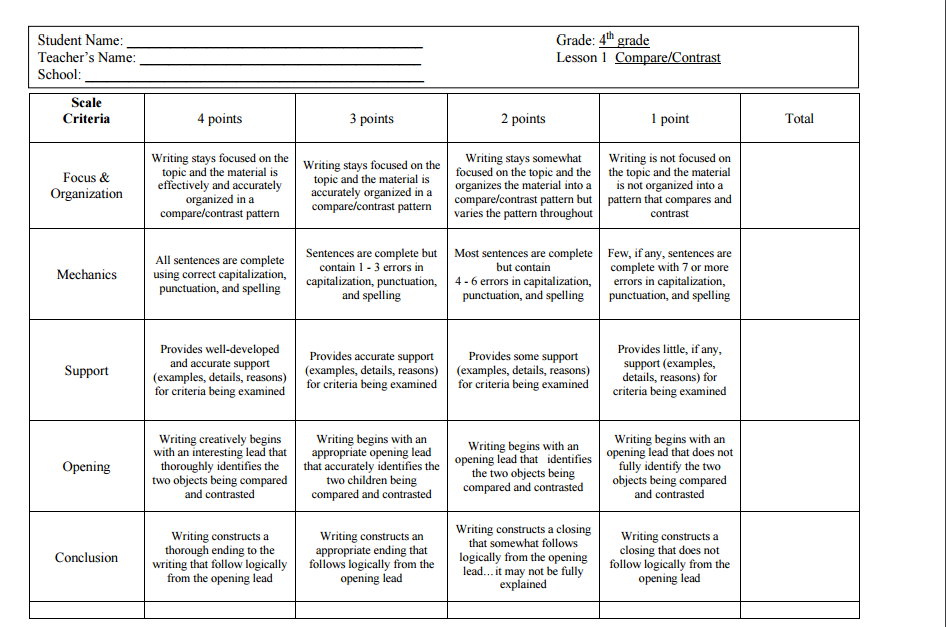
COMPARATIVE ESSAY: OVERCOMING OBSTACLES. BECOMING INDEPENDENT, BELIEVING IN YOURSELF (OR SELECTING ANOTHER THEME OF YOUR CHOICE)
YOU ARE GOING TO WRITE A FIVE PARAGRAPH (OR SIX IF YOU CHOOSE TO INCLUDE A SPECIAL INTRODUCTION) WHERE YOU COMPARE AND CONTRAST ALMOST HOME TO THE GREAT GILLY HOPKINS, MATILDA OR ANY OTHER NOVEL OF YOUR CHOICE.
FIRST PARAGRAPH (OPTIONAL) DISCUSSES WHAT IT MEANS TO BATTLE A BULLY (OR STATE WHATEVER THEME YOU WILL BE EXPLORING) WITH A SPECIAL QUOTE THAT RELATES TO YOUR IDEAS. SAMPLE: JAZZ MUSICIAN HERBIE HANCOCK ONCE SAID, "It's part of life to have obstacles. It's about overcoming obstacles; that's the key to happiness."
FIRST PARAGRAPH (REGULAR OR SECOND WITH SPECIAL INTRO): INTRODUCE BOTH STORIES-TEXTS DISCUSS HOW THEY ARE SIMILAR AND WHAT IMPORTANT THEME(S)-MESSAGE(S) THEY SHARE.
SECOND (OR THIRD PARAGRAPH) EXPLORES AN IMPORTANT SIMILARITY WITH SPECIFIC EVIDENCE. Try to add insight that tells us why you think the author included the scene-information-text-based evidence.
THIRD (OR FOURTH PARAGRAPH) ANOTHER IMPORTANT COMPARISON BETWEEN THE TWO TEXTS WITH SPECIFIC EVIDENCE. Try to add your own smart thinking.
FOURTH (OR FIFTH PARAGRAPH); THIS SHOULD BE THE MOST IMPORTANT SIMILARITY. WE CALL THIS THE "KNOCK 'EM SOCK 'EM PARAGRAPH. IMPRESS US WITH YOUR EVIDENCE AND ADD YOUR INSIGHT.
FIFTH (OR SIXTH PARAGRAPH): CONCLUSION. SUM UP WHAT BOTH STORIES TEACH US AND WHY THEY ARE IMPORTANT. ***Include an important difference-contrast (with text based evidence from both stories-texts). Also add on your own thinking-insight about what you the reader learned.
YOU ARE GOING TO WRITE A FIVE PARAGRAPH (OR SIX IF YOU CHOOSE TO INCLUDE A SPECIAL INTRODUCTION) WHERE YOU COMPARE AND CONTRAST ALMOST HOME TO THE GREAT GILLY HOPKINS, MATILDA OR ANY OTHER NOVEL OF YOUR CHOICE.
FIRST PARAGRAPH (OPTIONAL) DISCUSSES WHAT IT MEANS TO BATTLE A BULLY (OR STATE WHATEVER THEME YOU WILL BE EXPLORING) WITH A SPECIAL QUOTE THAT RELATES TO YOUR IDEAS. SAMPLE: JAZZ MUSICIAN HERBIE HANCOCK ONCE SAID, "It's part of life to have obstacles. It's about overcoming obstacles; that's the key to happiness."
FIRST PARAGRAPH (REGULAR OR SECOND WITH SPECIAL INTRO): INTRODUCE BOTH STORIES-TEXTS DISCUSS HOW THEY ARE SIMILAR AND WHAT IMPORTANT THEME(S)-MESSAGE(S) THEY SHARE.
SECOND (OR THIRD PARAGRAPH) EXPLORES AN IMPORTANT SIMILARITY WITH SPECIFIC EVIDENCE. Try to add insight that tells us why you think the author included the scene-information-text-based evidence.
THIRD (OR FOURTH PARAGRAPH) ANOTHER IMPORTANT COMPARISON BETWEEN THE TWO TEXTS WITH SPECIFIC EVIDENCE. Try to add your own smart thinking.
FOURTH (OR FIFTH PARAGRAPH); THIS SHOULD BE THE MOST IMPORTANT SIMILARITY. WE CALL THIS THE "KNOCK 'EM SOCK 'EM PARAGRAPH. IMPRESS US WITH YOUR EVIDENCE AND ADD YOUR INSIGHT.
FIFTH (OR SIXTH PARAGRAPH): CONCLUSION. SUM UP WHAT BOTH STORIES TEACH US AND WHY THEY ARE IMPORTANT. ***Include an important difference-contrast (with text based evidence from both stories-texts). Also add on your own thinking-insight about what you the reader learned.
TEST TAKING STRATEGIES:
| testtakingtips.pdf | |
| File Size: | 528 kb |
| File Type: | |
MYTHS, LEGENDS AND MORE:
| myths_folktales_tall_tales_legends.ppt | |
| File Size: | 1127 kb |
| File Type: | ppt |
ALMOST HOME CHAPTERS 29-36-DUE FRIDAY, MARCH 31:CHOOSE AT LEAST ONE FROM EACH OF THE FOLLOWING THREE CATEGORIES TO ANSWER CAREFULLY. ALSO COME UP WITH AT LEAST ONE OF YOUR OWN HIGH ORDER THINKING QUESTIONS AND JOT DOWN YOUR RESPONSE USING POHL'S THINK TO LEARN QUESTIONS. IN ADDITION, ANSWER AS THOROUGHLY AND THOUGHTFULLY, THE FOLLOWING QUESTIONS:
1. HOW DID PAINTING THE WALLS HELP SUGAR?
2. WHY DO YOU THINK REBA WASN'T NICE TO LEXIE?
3. How did Sugar feel about leaving Mac and Lexie and going to live with Reba and Mr. Leeland? Why?
4. What do you think the theme of Sugar's poem is at the end of chapter 36? Give text evidence. What about the mood? (How does it make you feel and why?)
5. Were you surprised by what happened when Mr. Leeland arrived? Why-why not?
SOCIAL ISSUES BOOK CLUB PROMPTS:Interpretation
Empathy
Personal Response
- What is this story really about? What is the author’s message or purpose for writing this book?
- Why do you think the author made this choice or wrote this part in this way?
- What social issues do I see in this book? What does this book say about the social issue?
- Why do you think the character did this or acted this way?
- How are characters’ interactions affected by the social issue and/or group membership?
- Does the character’s involvement in a group affect the way he or she is treated?
- Whose perspective is being told? Whose perspective is missing? Why?
- How might this story be different if told from the opposing point of view?
Empathy
- How do you think the character feels?
- What would you do or how would you feel if you were the character?
- Would you do things the same or differently as the character?
- Role play and imagine you are a character from the book, what would you say?
- How different are characters allowed to be? How do characters respond to those who are different?
- What groups have power? Is power distributed equally? Is this fair?
Personal Response
- Has something like this happened in your own life?
- Do we see this in the world around us?
- How is this book similar to my life? How is it different?
- Is this a fair or accurate depiction of how life really is?
- What do you like about this book? What do you dislike?
- Is this social issue still affecting people today?
- What groups are represented in this book? Am I a member of those groups? What groups do I belong to?
- What have I learned about this social issue by reading this book? What’s my big idea about this issue?
- How can I address this social issue in my own life?
SOCIAL ISSUES: GENDER LENS:
: ROLE OF GENDER IN LITERATURE. HOW ARE MALE AND FEMALE CHARACTERS REPRESENTED?
Link: We began to discuss the whole idea of fairness and justice in the stories we are reading. We are working on developing empathy and compassion for our main characters. We discussed many important critical issues including are our characters being portrayed fairly and accurately as well as treating each other fairly. Today, we will specifically focus on the gender issue. In other words, how are male and female characters represented and are they being depicted or shown fairly and accurately?
Role of gender in literature. How are male and female characters portrayed/represented?
Link: Yesterday we began discussing the whole idea of fairness and justice in the stories we are reading. We discussed many important issues including if characters are portrayed fairly and accurately as well as treating each other fairly. Today we will focus specifically on the gender issue. In other words, how are male and female characters represented and are they being depicted or shown fairly and accurately?
Teach: Thinking about gender involves thinking about how male and female characters are represented. There are several elements for us to focus on:
Independent: Read your story-book club book with the critical lens of gender. ANSWER AS MANY OF THESE QUESTIONS AS POSSIBLE IN YOUR PARTNERSHIPS AFTER TRYING TO ANSWER THEM INDEPENDENTLY. Mark places where gender plays a role or any of the above issues come up. Write a response in your reader’s notebook. PREPARE AN EXIT SLIP.
Link: We began to discuss the whole idea of fairness and justice in the stories we are reading. We are working on developing empathy and compassion for our main characters. We discussed many important critical issues including are our characters being portrayed fairly and accurately as well as treating each other fairly. Today, we will specifically focus on the gender issue. In other words, how are male and female characters represented and are they being depicted or shown fairly and accurately?
Role of gender in literature. How are male and female characters portrayed/represented?
Link: Yesterday we began discussing the whole idea of fairness and justice in the stories we are reading. We discussed many important issues including if characters are portrayed fairly and accurately as well as treating each other fairly. Today we will focus specifically on the gender issue. In other words, how are male and female characters represented and are they being depicted or shown fairly and accurately?
Teach: Thinking about gender involves thinking about how male and female characters are represented. There are several elements for us to focus on:
- Looks: We need to think about who is looking and who is being looked at. Very often in television shows, commercials and films, females are set up as “pretty objects” to be looked at and admired by males. There is the stereotype that think, tall, great hair and great clothes equals a great person. These are the qualities that girls may aspire to or boys admire. Even in books without visual images, the author paints pictures in our minds about the main characters. We want to ask ourselves, what characteristics are used to describe the main character? How is the main character treated based on his or her looks/appearance? Pretty, ugly, thin, fact, hunchback, etc. How is he or she treated by others based on their looks?
- Strength: Male and female characters are often portrayed differently in terms of their strengths and vulnerability/sensitivity. It is not fair for females to always be vulnerable; it is not fair always for males to be strong. How strong is your main character? Is this trait admired by others in the story? Why or why not?
- Agency: Male characters are usually the ones who do things, have gumption, nerve, chutzpah, who make projects, have strong goals and accomplishments. Female characters often wait for other people to get them going or they respond to what males or adults are doing. Think about if the main character is encouraged to have strong goals and be strong willed and ambitious. Does this fit in with the role the male or female is supposed to have in society? Explain.
- Centrality: Male characters are often the ones whose actions are central to the story. Even when a girl is the main character, she may seem merely a substitute for a male stereotype—physically strong, action oriented or fantastically heroic (think of some of the Disney films—Pocohantas, Ariel, etc). Think about who is central to your story. Describe how the central character is being shown. What are some qualities/characteristics? Is your character allowed to be combinations of various qualities—for instance both strong and sensitive? If your character is female is she merely a flip of the usual stereotypical male hero?
- Conformity: Is the main character expected to conform to cultural/societal stereotypes? Or is he or she allowed to become an independent thinker and able to take action without being unfairly prejudged by others?
- Feminine/Masculine stereotypes: What are some typical feminine/masculine stereotypes valued in our society? How well does your character fit these stereotypes?
- How should males and females be valued in our society? Think of what role should gender play? What are important qualities/characteristics for both males and females? Is there a need for certain gender specific qualities?
Independent: Read your story-book club book with the critical lens of gender. ANSWER AS MANY OF THESE QUESTIONS AS POSSIBLE IN YOUR PARTNERSHIPS AFTER TRYING TO ANSWER THEM INDEPENDENTLY. Mark places where gender plays a role or any of the above issues come up. Write a response in your reader’s notebook. PREPARE AN EXIT SLIP.
EMPATHY POWERPOINT:
| empathy__1_.ppt | |
| File Size: | 2519 kb |
| File Type: | ppt |
ALMOST HOME PART THREE-DUE TUESDAY, MARCH 21:
Part Three: Due Monday: Read chapters 13-15
- Reread Sugar’s poem at the end of Chapter 13. How did Sugar change?
- Describe the feelings that Sugar’s poem at the end of Chapter 14 expresses. Provide text evidence to support your response.
- What was the biggest problem in Chapter 15?
- Why do you think Mr. B’s email to Sugar was important while she was sitting and waiting at the hospital?
- What is the theme of King Cole’s Chapter ten, “Keep Marching” from Upon These Truths I Stand? How do you know? (Provide textual evidence).
- Where was Sugar placed after the group home? How was the new place different from the group home?
- (Question about empathy): Can you imagine being in the character’s shoes right now? What do you imagine?
- (Another question about empathy): What does the character believe to be true about life? Why? Do you believe anything similar?
- (Questions about compassion). You may write a thoughtful paragraph or two that answers all of these bullets or answer individually:
- HOW DO THE CHARACTERS IN YOUR STORY BEGIN TO HAVE THE COURAGE AND FORTITUDE TO LEAD COMPASSIONATE LIVES?
- WHAT OBSTACLES DO THEY ENCOUNTER ?
- HOW DO THEY OVERCOME THESE CHALLENGES?
- HOW DOES IT FIT INTO THE THEME OR BIG IDEA OF THE STORY?
- WHAT ABOUT THE PURPOSE OF OUR OWN LIVES?
GREAT GILLY HOPKINS: COMPARATIVE ESSAY-BOOK VS. MOVIE: DUE TUESDAY, MARCH 7
TASK: You will write a five paragraph comparative opinion essay that compares and contrasts at least two important differences and one important similarity between the book, the Great Gilly Hopkins and its movie counterpart. You will also decide which version was better with specific reasons to defend your decision. Your essay should include all of the following:
- An introductory paragraph that has a “hook” to grab your reader’s attention.
- You included two important differences and one similarity in the body of your essay
- You supported your examples with relevant details and-or evidence from the book and-or movie
- You added insight to each example
- Your intro and conclusion states your opinion as to which version you preferred
- Your conclusion revisits your thesis in a fresh and interesting way and leaves the reader with an interesting thought, question or idea
- You used precise and vivid details to help your reader draw a clear picture
- You make sure you address theme-big idea-message of the story in your essay
- You include a title that captures the heart and soul-main idea of your essay
- You pay careful attention to writing conventions-mechanics and follow the five C’s: clarity, concise, conventions, compassion and provide context of each event-situation you are describing
OUR THOUGHTS ABOUT SIMILARITIES AND DIFFERENCES BETWEEN GREAT GILLY HOPKINS BOOK AND MOVIE:
| gillybookandmovie.docx | |
| File Size: | 112 kb |
| File Type: | docx |
| gillybookandmoviebody.docx | |
| File Size: | 136 kb |
| File Type: | docx |
| even_though_the_great_gilly_hopkins_is_a_story_about.docx | |
| File Size: | 54 kb |
| File Type: | docx |
BIRCHBARK FINAL: DUE THURSDAY, FEBRUARY 16: REMEMBER--ONE VOICE...ONE THEME...WHEN WRITING LITERARY ESSAYS
| literary_essay_rubric.doc | |
| File Size: | 34 kb |
| File Type: | doc |
Black Elk was a respected Sioux leader, who lived from 1863-1950. Today, many
of his words are used to teach others about important Native ideas and traditions.
Black Elk often spoke about the circle and its meaning.
2. Read Black Elk’s words:
“Everything an Indian does is in a circle, and that is because the Power of the
World always works in circles. Everything tries to be round . . .The sky is round . . .
the earth is round like a ball, and so are the stars. The wind, in its greatest
power, whirls. Birds make their nests in circles . . . Even the seasons form a great
circle in their changing, and always come back to where they were. The life of a
man is in a circle from childhood to adulthood, and so it is in everything where
power moves.”
"Circle Of Life"
From the day we arrive on the planet
And blinking, step into the sun
There's more to be seen than can ever be seen
More to do than can ever be done
Some say eat or be eaten
Some say live and let live
But all are agreed as they join the stampede
You should never take more than you give
In the circle of life
It's the wheel of fortune
It's the leap of faith
It's the band of hope
Till we find our place
On the path unwinding
In the circle, the circle of life
Some of us fall by the wayside
And some of us soar to the stars
And some of us sail through our troubles
And some have to live with the scars
There's far too much to take in here
More to find than can ever be found
But the sun rolling high through the sapphire sky
Keeps great and small on the endless round
GETTING READY TO WRITE AN ESSAY FOR BIRCHBARK HOUSE:
CHOOSE ONE DOMINANT THEME FROM THIS STORY: CIRCLE OF LIFE, SELF-RELIANCE-INDEPENDENCE, FAMILY, TRANSFORMATION & IDENTITY.
PARAGRAPH ONE: DESCRIBE THE THEME IN DEPTH. USE A REAL-LIFE QUOTE IN WHICH YOU ANALYZE ITS MEANING.
PARAGRAPH TWO: FIRST EXAMPLE OF HOW THEME IS PRESENT. IN BIRCHBARK HOUSE, THE THEME OF _____________ IS EVIDENT. I KNOW THIS BECAUSE….THIS TEACHES ME THAT.
PARAGRAPH THREE: ANOTHER EXAMPLE OF THEME. ANOTHER REASON _____________ IS SHOWN IN THIS STORY IS WHEN……I KNOW THIS BECAUSE….THIS TEACHES ME THAT….
PARAGRAPH FOUR: MOST POWERFUL EXAMPLE: THE STRONGEST EXAMPLE OF WHY _________IS EVIDENT IN THIS STORY IS WHEN _____________. I KNOW THIS BECAUSE….THIS TEACHES ME THAT…..
PARAGRAPH FIVE: OPTIONAL—CONNECT THE THEME-STORY TO ANOTHER TEXT-STORY-SONG. EXPLAIN THE CONNECTION CAREFULLY WITH TEXT BASED EVIDENCE FROM BOTH STORIES-TEXT.
PARAGRAPH 5-6: CONCLUSION. WRAP IT UP WITH SOMETHING PASSIONATE TO SAY ABOUT YOUR THEME. YOU MAY INCLUDE ANOTHER QUOTE BUT MAKE SURE YOU EXPLAIN HOW IT RELATES TO STORY.
of his words are used to teach others about important Native ideas and traditions.
Black Elk often spoke about the circle and its meaning.
2. Read Black Elk’s words:
“Everything an Indian does is in a circle, and that is because the Power of the
World always works in circles. Everything tries to be round . . .The sky is round . . .
the earth is round like a ball, and so are the stars. The wind, in its greatest
power, whirls. Birds make their nests in circles . . . Even the seasons form a great
circle in their changing, and always come back to where they were. The life of a
man is in a circle from childhood to adulthood, and so it is in everything where
power moves.”
"Circle Of Life"
From the day we arrive on the planet
And blinking, step into the sun
There's more to be seen than can ever be seen
More to do than can ever be done
Some say eat or be eaten
Some say live and let live
But all are agreed as they join the stampede
You should never take more than you give
In the circle of life
It's the wheel of fortune
It's the leap of faith
It's the band of hope
Till we find our place
On the path unwinding
In the circle, the circle of life
Some of us fall by the wayside
And some of us soar to the stars
And some of us sail through our troubles
And some have to live with the scars
There's far too much to take in here
More to find than can ever be found
But the sun rolling high through the sapphire sky
Keeps great and small on the endless round
- What does Black Elk’s quote mean?
- How does it connect to Birchbark House and Omakayas’ life? Give at least two specific examples.
- What is the theme of “Circle of Life?” Give two examples from song to support your opinion.
- How does the song connect to Birchbark House? Give at least two examples to support your perspective.
GETTING READY TO WRITE AN ESSAY FOR BIRCHBARK HOUSE:
CHOOSE ONE DOMINANT THEME FROM THIS STORY: CIRCLE OF LIFE, SELF-RELIANCE-INDEPENDENCE, FAMILY, TRANSFORMATION & IDENTITY.
PARAGRAPH ONE: DESCRIBE THE THEME IN DEPTH. USE A REAL-LIFE QUOTE IN WHICH YOU ANALYZE ITS MEANING.
PARAGRAPH TWO: FIRST EXAMPLE OF HOW THEME IS PRESENT. IN BIRCHBARK HOUSE, THE THEME OF _____________ IS EVIDENT. I KNOW THIS BECAUSE….THIS TEACHES ME THAT.
PARAGRAPH THREE: ANOTHER EXAMPLE OF THEME. ANOTHER REASON _____________ IS SHOWN IN THIS STORY IS WHEN……I KNOW THIS BECAUSE….THIS TEACHES ME THAT….
PARAGRAPH FOUR: MOST POWERFUL EXAMPLE: THE STRONGEST EXAMPLE OF WHY _________IS EVIDENT IN THIS STORY IS WHEN _____________. I KNOW THIS BECAUSE….THIS TEACHES ME THAT…..
PARAGRAPH FIVE: OPTIONAL—CONNECT THE THEME-STORY TO ANOTHER TEXT-STORY-SONG. EXPLAIN THE CONNECTION CAREFULLY WITH TEXT BASED EVIDENCE FROM BOTH STORIES-TEXT.
PARAGRAPH 5-6: CONCLUSION. WRAP IT UP WITH SOMETHING PASSIONATE TO SAY ABOUT YOUR THEME. YOU MAY INCLUDE ANOTHER QUOTE BUT MAKE SURE YOU EXPLAIN HOW IT RELATES TO STORY.
| birchbarkfinal.docx | |
| File Size: | 90 kb |
| File Type: | docx |
SOME OF OUR SMART THINKING FOR BIRCHBARK HOUSE & CIRCLE OF LIFE:
| some_of_our_smart_thinking_for_circle_of_life_and_birchbark_house.docx | |
| File Size: | 139 kb |
| File Type: | docx |
FOSTERING ARTICLES TO PRACTICE CODING AND SUMMARIZING:
https://newsela.com/articles/foster-college/id/6997/
https://newsela.com/articles/fosterkids-mentors/id/10797/
COMPARATIVE ESSAY STRUCTURE:
COMPARATIVE ESSAY:
Use this link for reference: http://www.readwritethink.org/files/resources/interactives/compcontrast/
COMPARATIVE ESSAY: BATTLING BULLYING (OR SELECTING ANOTHER THEME OF YOUR CHOICE)
YOU ARE GOING TO WRITE A FIVE PARAGRAPH (OR SIX IF YOU CHOOSE TO INCLUDE A SPECIAL INTRODUCTION) WHERE YOU COMPARE AND CONTRAST ANY TWO OF THE FOLLOWING PATRICIA POLACCO BOOKS (THANK YOU, MR. FALKER, BULLY AND-OR JUNKYARD WONDERS).
FIRST PARAGRAPH (OPTIONAL) DISCUSSES WHAT IT MEANS TO BATTLE A BULLY (OR STATE WHATEVER THEME YOU WILL BE EXPLORING) WITH A SPECIAL QUOTE THAT RELATES TO YOUR IDEAS. SAMPLE: Chef Cat Cora once said, “Bullying is killing our kids. Being different is killing our kids and the kids who are bullying are dying inside. We have to save our kids whether they are bullied or they are bullying. They are all in pain.” Bullying is an act of aggressive and unwanted behavior that involves intimidating and/or physically harming another person. Among school age kids, bullying involves a power imbalance of the stronger attacking the weaker. Children who are victims of bullying often feel alone and powerless to change their situation. When a child is bullied they can feel isolated, depressed, and low self-confidence may develop.
FIRST PARAGRAPH (REGULAR OR SECOND WITH SPECIAL INTRO): INTRODUCE BOTH STORIES-TEXTS DISCUSS HOW THEY ARE SIMILAR AND WHAT IMPORTANT THEME(S)-MESSAGE(S) THEY SHARE.
SECOND (OR THIRD PARAGRAPH) EXPLORES AN IMPORTANT SIMILARITY WITH SPECIFIC EVIDENCE. Try to add insight that tells us why you think the author included the scene-information-text-based evidence.
THIRD (OR FOURTH PARAGRAPH) ANOTHER IMPORTANT COMPARISON BETWEEN THE TWO TEXTS WITH SPECIFIC EVIDENCE. Try to add your own smart thinking.
FOURTH (OR FIFTH PARAGRAPH); THIS SHOULD BE THE MOST IMPORTANT SIMILARITY. WE CALL THIS THE "KNOCK 'EM SOCK 'EM PARAGRAPH. IMPRESS US WITH YOUR EVIDENCE AND ADD YOUR INSIGHT.
FIFTH (OR SIXTH PARAGRAPH): CONCLUSION. SUM UP WHAT BOTH STORIES TEACH US AND WHY THEY ARE IMPORTANT. ***Include an important difference-contrast (with text based evidence from both stories-texts). Also add on your own thinking-insight about what you the reader learned.
YOU ARE GOING TO WRITE A FIVE PARAGRAPH (OR SIX IF YOU CHOOSE TO INCLUDE A SPECIAL INTRODUCTION) WHERE YOU COMPARE AND CONTRAST ANY TWO OF THE FOLLOWING PATRICIA POLACCO BOOKS (THANK YOU, MR. FALKER, BULLY AND-OR JUNKYARD WONDERS).
FIRST PARAGRAPH (OPTIONAL) DISCUSSES WHAT IT MEANS TO BATTLE A BULLY (OR STATE WHATEVER THEME YOU WILL BE EXPLORING) WITH A SPECIAL QUOTE THAT RELATES TO YOUR IDEAS. SAMPLE: Chef Cat Cora once said, “Bullying is killing our kids. Being different is killing our kids and the kids who are bullying are dying inside. We have to save our kids whether they are bullied or they are bullying. They are all in pain.” Bullying is an act of aggressive and unwanted behavior that involves intimidating and/or physically harming another person. Among school age kids, bullying involves a power imbalance of the stronger attacking the weaker. Children who are victims of bullying often feel alone and powerless to change their situation. When a child is bullied they can feel isolated, depressed, and low self-confidence may develop.
FIRST PARAGRAPH (REGULAR OR SECOND WITH SPECIAL INTRO): INTRODUCE BOTH STORIES-TEXTS DISCUSS HOW THEY ARE SIMILAR AND WHAT IMPORTANT THEME(S)-MESSAGE(S) THEY SHARE.
SECOND (OR THIRD PARAGRAPH) EXPLORES AN IMPORTANT SIMILARITY WITH SPECIFIC EVIDENCE. Try to add insight that tells us why you think the author included the scene-information-text-based evidence.
THIRD (OR FOURTH PARAGRAPH) ANOTHER IMPORTANT COMPARISON BETWEEN THE TWO TEXTS WITH SPECIFIC EVIDENCE. Try to add your own smart thinking.
FOURTH (OR FIFTH PARAGRAPH); THIS SHOULD BE THE MOST IMPORTANT SIMILARITY. WE CALL THIS THE "KNOCK 'EM SOCK 'EM PARAGRAPH. IMPRESS US WITH YOUR EVIDENCE AND ADD YOUR INSIGHT.
FIFTH (OR SIXTH PARAGRAPH): CONCLUSION. SUM UP WHAT BOTH STORIES TEACH US AND WHY THEY ARE IMPORTANT. ***Include an important difference-contrast (with text based evidence from both stories-texts). Also add on your own thinking-insight about what you the reader learned.
SAMPLES: REALITY OF BEING HOMELESS
SAMPLE ESSAY WITH DIRECTIONS TO GUIDE YOU:
| comparativeessay__2_.doc | |
| File Size: | 44 kb |
| File Type: | doc |
OUTLINE TO ASSIST YOU:
| outline_for_comparing_and_contrasting_junkyard_wonders_and_dear_mr.docx | |
| File Size: | 99 kb |
| File Type: | docx |
ALTERNATE TASK:
| comparativeessaytask.docx | |
| File Size: | 135 kb |
| File Type: | docx |
RUBRIC:
books.google.com/books/about/Bully.html?id=0n3Jflw-JrcC&printsec=frontcover&source=kp_read_button&hl=en#v=onepage&q&f=falseBULLY BY PATRICIA POLACCO: WRITE A SUMMARY USING THE SWBS GRAPHIC ORGANIZERS (CHOOSE ONE). DON'T FORGET TO WRITE THREE-FIVE SENTENCES AFTERWARDS INCLUDING THE THEME.
THEN WRITE A RESPONSE THAT INCLUDES ADDRESSING THE FOLLOWING: LYLA'S DAD EXPLAINS GAGE'S BEHAVIOR BY SAYING, "IN ORDER FOR PEOPLE LIKE GAGE'S CANDLE TO GLOW BRIGHTER, SHE HAS TO BLOW OUT YOURS." WHAT DOES HE MEAN? WHAT DOES LYLA LEARN ABOUT FRIENDSHIP (OR ANOTHER IMPORTANT THEME LIKE COURAGE, ANTI-BULLYING, ETC). USE SPECIFIC DETAILS FROM THE TEXT IN YOUR ANSWER.
Authors show don’t tell us the message-theme in a story. At the end of the story, Lyla’s dad said, “Think about it Lyla…in order for people like Gage’s candle to glow brighter she has to blow out yours.”
But I have a decision to make. Should Jamie and I go back to school, hope for the best? Or should we go to another?
What would you do?
THEMES FOR BULLY:
But I have a decision to make. Should Jamie and I go back to school, hope for the best? Or should we go to another?
What would you do?
THEMES FOR BULLY:
- Honesty
- Stand Up for Yourself
- Friendship
- Anti-bullying
- Courage
SUMMARIZING A FICTION TEXT, PLEASE VISIT: mrswarnerarlington.weebly.com/summarize.html
GILLY HOPKINS-CHAPTERS 10, 11 & 12:
FOR MONDAY: READ chapters 10, 11 and 12. Reflect and respond:
- Define the following words using context clues and-or look up in the dictionary. Also, identify correct part of speech:
- How has Gilly changed since she went to live with the Trotters? (Give at least two specific examples…at first…but then…) Also, explain WHY she changed (that’s where you show insight).
- What is so special for Gilly about her Thanksgiving with Mrs. Trotter, Mr. Randolph, and William? What does Gilly finally realize, and how does it affect her?
- What is it about Mrs. Trotter, Mr. Randolph, and William that Gilly realizes only all too late? Why do you believe Gilly finally comes to this realization?
- A false promise is a promise that is made with no intention of carrying it out and esp. that is made with intent to deceive or defraud. Discuss the theme of false promises in the novel “The Great Gilly Hopkins” by Katherine Paterson. What are false promises? Which false promises appear in the novel? Why are they false? Are there any promises in the novel that were not false? Explain.
- The following are a list of events from the story. A cause is something that makes something else happen. An effect is the outcome or result. Please identify which of the following events were causes and which were the effects-outcomes of the other. Explain how they relate to one another.
- The postcard from Courtney
- Gilly writes a letter to Courtney and tells her that she is coming to California
- Gilly steals money
- Gilly tries to get to California
- Gilly is caught by the police
- Gilly has to repay the money
- Courtney sends Gilly’s letter to her mother.
- Grandmother comes to visit Gilly.
- Grandmother talks to Mrs. Ellis.
- The social worker decides that Gilly will go live with grandmother.
- Chapter 11 is definitely a turning point in the book. It is also known as the climax or place of a change of a direction). Review the plotting our plots activity packet. Begin working on it for Gilly Hopkins. Think about parts two and three now (but you will hand in the entire packet upon completion of this novel). Describe the complications that develop. Describe at least three complications that the main character has to face. Describe the choices he or she has to make. (ex: he or she must decide to do ______________ or _________________. Ultimately, he/she decides to ____________________________ because _________________________________________).
- What is the climax-turning point in your story? (Now). Describe the final decision or choice the protagonist makes to settle the conflict-dilemma. (This may not occur until the next chapter).
COMPARING AND CONTRASTING IN FICTION TEXTS:
COMPARING AND CONTRASTING IN FICTIONAL TEXTS:ELEMENTS WE COMPARE AND CONTRAST INSIDE A FICTIONAL TEXT:
- CHARACTER TRAITS
- ACTIONS-BEHAVIOR OF DIFF CHARACTERS AND DIFF GROUPS OF PEOPLE
- RELATIONSHIPS
- CHARACTER’S RESPONSES TO SITUATIONS
- RESPONSES TO EVENTS
- DIFFERENT BELIEFS-TRADITIONS OF DIFFERENT GROUPS
- CHARACTER’S FEELINGS
- CHARACTERS’ THOUGHTS
- SETTING
- CHARACTER’S LIFESTYLES
- DIFFERENT GOALS
- WANTS-NEEDS
- CHANGE-TRANSFORMATION
NON-FICTION DIFFERENT TEXT STRUCTURES: www.ereadingworksheets.com/text-structure-worksheets/identifying-text-structure-1.pdf
| nonfictiontextstructures.pdf | |
| File Size: | 285 kb |
| File Type: | |
GILLY CHAPTERS 7-9
FOR MONDAY: READ CHAPTERS 7-9. REFLECT AND RESPOND:
Discussion Question 1
What difficult truths does Miss Ellis tell Gilly about Courtney? What do these facts mean for Gilly?
Discussion Question 2
Why do you think that Mrs. Trotter wants to keep Gilly, despite all of the trouble Gilly has caused her?
Discussion Question 3
Why is it that Gilly Hopkins enjoys causing trouble? Why does she always feel the need to act tough? What things does she do in order to make herself tough and to prove to others that she is tough? Are her actions justifiable? Why or why not?
DISCUSSION QUESTION #4: CHOOSE A QUESTION FROM SOCIAL ISSUES ACTIVITY SHEET OR YOUR OWN. JOT YOUR THINKING DOWN AND BE PREPARED TO DISCUSS.
Discussion Question 1
What difficult truths does Miss Ellis tell Gilly about Courtney? What do these facts mean for Gilly?
Discussion Question 2
Why do you think that Mrs. Trotter wants to keep Gilly, despite all of the trouble Gilly has caused her?
Discussion Question 3
Why is it that Gilly Hopkins enjoys causing trouble? Why does she always feel the need to act tough? What things does she do in order to make herself tough and to prove to others that she is tough? Are her actions justifiable? Why or why not?
DISCUSSION QUESTION #4: CHOOSE A QUESTION FROM SOCIAL ISSUES ACTIVITY SHEET OR YOUR OWN. JOT YOUR THINKING DOWN AND BE PREPARED TO DISCUSS.
WHO'S GOT THE POWER?
Power and Character Struggles:
- Ask questions about power relationships. Who has power and who doesn’t? How does it shift throughout the book? How does this power affect characters?
- What is fair or unfair in this story? Does this involve physical difference? Intellectual differences? Differences in power, status, wealth, or membership in certain groups?
- Many times in a story, the main character is dealing with a problem. He or she is struggling with a major issue or may be facing certain pressures. Think about the struggles or pressures the main character is working through. What are the struggles or pressures and how does he or she handle these?
SOCIAL ISSUES-GROUPS-MENTOR TEXT: SMOKY NIGHT: EVE BUNTING: How can readers notice what groups are being presented in the text, consider how these groups help us understand the text’s social issues while helping us think about what groups we personally have membership in? MENTOR TEXT: SMOKY NIGHT. https://teachersh.scis-his.net/kcomeau/wp-content/uploads/sites/140/2015/08/smoky_night.pdf
Social justice-groups.
Reflect and respond to the following questions as you read independently and work in Great Gilly Hopkins. These questions should be completed along with other questions for chapters 5 and 6.
7. Is there something the author seems to want us to know about being a member of that group? Does this fit with our lives? What kind of community is this? What causes people to act this way?
What would happen if the character’s group was flipped – if a girl character was a boy or a poor character rich? Would that change their choices or reactions? What does this say about what we believe?
- Individuals can be seen as the person they are and also as members of groups. Part of the way people get to be the persons they are is by picking up the attitudes, beliefs and feelings of the groups they belong to, by being like others around them.
- Some groups are pretty clearly defined in most people’s thinking, males, females, Latinos, blacks, whites, poor, rich different religious groups, groups with different hobbies, interests, different peer-social groups, etc. Even though these categories seem rigid in our culture, people can change groups.
- People should be able to form purposeful, emotionally significant connections with others—in other groups and their own groups. Individuals can choose many of the groups they identify with. We are members of a gender group, a racial group and a class group but many of us have complex, overlapping memberships even in those categories.
- We also choose to be members of other groups that overlap those categories. For instance, we may be members of the road runners club along with people from other gender, race and class groups. We can act to make our lives better as runners without being divided by our differences. Sometimes we can’t to break barriers. For instance, girls now participate in competitive high school football-baseball.
- We can think of some of the groups that the main characters in your story belongs to.
Reflect and respond to the following questions as you read independently and work in Great Gilly Hopkins. These questions should be completed along with other questions for chapters 5 and 6.
- How does this book deal with individuals and groups? Are the people acting alone and in competition with each other or does the text help us imagine people working together?
- How does money fit into the text?
- Are the groups you belong to in this text? What do they look like here? If your own groups are missing, what would they say if they were in the book? What groups’ perspectives are missing here?
- What really hard things are happening here? Are they happening in the world? Where?
- How different are people allowed to be in this story? Does it assume that everyone is happy and good in the same ways?
7. Is there something the author seems to want us to know about being a member of that group? Does this fit with our lives? What kind of community is this? What causes people to act this way?
What would happen if the character’s group was flipped – if a girl character was a boy or a poor character rich? Would that change their choices or reactions? What does this say about what we believe?
GREAT GILLY HOPKINS-CHAPTERS 5 & 6 DUE THURSDAY
- Is it easy or hard to empathize with Gilly? In one moment she is proud of how terrible she can be, and in the next she is vowing she'd be a perfect child if she were to live with her mother. Why do you think she behaves like this?
- What happens when Gilly learns she is behind the other students in her class? Why is she determined to get ahead of the rest of the students? How does Gilly feel about herself and her intelligence? What does Gilly intend to do after she passes all the other students?
- Write a paragraph about Gilly's opinion of herself. On the surface she seems to have an extremely high opinion of her abilities, but what is going on beneath the surface? What is motivating her to be better than everyone else?
- Consider Gilly's attempt to befriend William Ernest. Is it a good thing? Or, is it selfish? Explain. What is the danger involved in her plan to use the child to help her find more money at Mrs. Randolph's home?
- What is happening to Gilly as the little boy looks up at her with joy? Is anything changing about her?
- What has Gilly's past experiences been like with her teachers? How do those past experiences compare to her new teacher's indifference to her? Why is Gilly so upset about Miss Harris's indifference? What does she plan to do about it?
- Does race in any way enter into Gilly's reaction to the way Miss Harris treats her? What is bothering Gilly most? How different is Miss Harris from the teachers Gilly has had before? Does she gain satisfaction in the past from her behaviors? Does the play a role in how she feels about not getting that attention from Miss Harris?
GREAT GILLY HOPKINS-CHAPTERS 3 AND 4 DUE MONDAY
FOR MONDAY: READ CHAPTERS 3 AND 4-REFLECT AND RESPOND:
- Define the following words using context clues-and or a dictionary. Identify the correct part of speech, too: vigorously, emphatically, clamor, fracas, sassily, ogre, sarsaparilla, fret, divert
- How does Gilly react to the principal? If you were the principal, how would you handle Gilly?
- How does Gilly feel at the end of the chapter 3? Why?
- What is Gilly’s attitude towards African Americans?
- Character analysis. Katherine Patterson provides in Gilly Hopkins a strong character for us to read about. The author reveals Gilly to us in many ways. Can you begin to figure out what Gilly is thinking? How do you know her so well? Respond thoughtfully by focusing on the following:
- What clues help you figure out how Gilly feels?
- Is she a nice person? Why or why not?
- Does she remind you of any other characters? Why? Explain.
- What would you like to change about Gilly?
- What if Gilly hadn’t been placed at Trotter’s? What if she was placed with a so-called “normal” family? Would she have “fit in?” How would the story have been different? Write a short paragraph to explain your answer.
- What do you think of Gilly’s dreams? Are they realistic? Explain. Would it be possible for her to “change into a whole new person?” Explain.
- What does Trotter mean when she says, “One man’s trash is another man’s treasure?” give an example to show you understand this saying.
SOCIAL ISSUE-A PROBLEM-CONDITION-SITUATION THAT OCCURS IN SOCIETY OR IMPACTS A GROUP OF PEOPLE INVOLVES THE WAY WE RELATE AND INTERACT WITH OTHERS
Growing Up: Feelings of Exclusion and Secretiveness can be Overwhelming and Confusing;
· Courage and Honor: Understanding Self and Others;
· Culture and Diversity: Responding to racism, stereotypes and prejudices;
· Finding Our Way in the World as We Overcome Obstacles;
· Impact: The World Changes Us; We Change the World;
· Forgiveness: Finding Good in People and Places;
· Insights: Finding Resolutions to Problems through the Arts;
· Overcoming Obstacles in Life;
· Fitting In: Living in a World of Differences; and
· Perceptions: The Way Others View Us Can Affect the Way We View Ourselves.
- CYBER BULLYING
- HOMELESSNESS
- ABANDONED-HOMELESS ANIMALS
- POLITICIANS WHO “MUDSLING” AND SAY HATEFUL THINGS AGAINST CERTAIN GROUPS
- PREJUDICE
- TERRORISM
- VIOLENT VIDEO GAMES
- DRUGS
- ALCOHOLISM
- SMOKING
- INTERNET SAFETY
- BULLYING
- PEER PRESSURE
- ACCESS TO AFFORDABLE HEALTH CARE
- LITERACY
- POVERTY
- Bullying
- Fitting In/Being New
- Friendship Issues
- Growing Up
- Homelessness
- Poverty
- Divorce/Family Issues
- Racism/Discrimination
- Peer Pressure
- Death/Dying
- Building Community
Growing Up: Feelings of Exclusion and Secretiveness can be Overwhelming and Confusing;
· Courage and Honor: Understanding Self and Others;
· Culture and Diversity: Responding to racism, stereotypes and prejudices;
· Finding Our Way in the World as We Overcome Obstacles;
· Impact: The World Changes Us; We Change the World;
· Forgiveness: Finding Good in People and Places;
· Insights: Finding Resolutions to Problems through the Arts;
· Overcoming Obstacles in Life;
· Fitting In: Living in a World of Differences; and
· Perceptions: The Way Others View Us Can Affect the Way We View Ourselves.
SOCIAL ISSUES BOOK CLUBS:
First—in writer’s notebook, choose one of the following three situations to write a response to in narrative format and then turn and talk with these pre-reading discussion questions:
- Have you ever been separated from a parent or family member for a period of time? How did you feel about the separation? What was the hardest part? What did you do to make yourself miss the parent or other family member less?
- Have you ever been very frightened? What made you afraid? What was the situation? How did you feel at first? Did you try to bluff, to act tough? How did you overcome your fear?
- Have you ever heard the expression, “the power of positive thinking?” What does it mean? Do you believe in it? If not, why not? If so, when have you seen it work for someone else? When has it worked for you?
- SHARE RESPONSES.
- Intro to the story. What do you think it will be about by previewing? What is setting? When and where do you think the story takes place? What genre? We can use a story map for this story. Think of it in terms of setting, problem, goal, obstacles, turning point and resolution.
- We can also use a character map. Take notice of what the main character does-acts, how she feels, what she says and what she looks like. We should also look at her relationships with other characters and how do they feel about her?
- Readers notice that books have meaning beyond the obvious and can analyze texts through different lenses.
- Readers read with a social issue lens. We stop, look for, and name social issues we see in the text.
- Readers notice elements of the story that are similar to our own world and real life experiences.
- As readers we ask ourselves, how does this social issue affect people’s lives today?
- Readers ask, is this story fair? Are characters and ideas presented accurately or stereotypically? Is this how things are in real life?
- What does the author want me to feel when reading this text? Why do you think so?
- How can we relate this to what is going on in the real world?
- And what could we do to change it if we could?
- How does this book help me think about social issues I care about or causes I am committed to?
- One way that readers can determine the social issues that are present in their book is noticing when an idea makes us stop and think – “it’s just not fair!” We think about why this issue seems unfair to us.
- Define the following words using context clues and-or a dictionary. Also identify the part of speech: maneuver, obligingly, bolster, barracuda, self-righteous, vengeance.
- What does Gilly think of herself? How do you know?
- Re-read the last two paragraphs of chapter one. What insight do you have about Gilly? In other words, what do you learn about the type of person she is? Jot down your thoughts along with text-based evidence to support your thinking.
- What does the author mean when she uses the simile, “Listening to that woman was like licking melted ice cream off the carton?”
- Re-read Gilly’s summary of her situation on page 13. What does it reveal about Gilly?
- What does Gilly dream about at the end of chapter 2?
- In terms of “plotting our plots,” what is Gilly’s problem-conflict (s) so far and her goals? What does she really want?
- ****Looking at this story through a social issues lens:
- Is this story fair?
- What does the author want me to feel when reading this text? Why do you think so?
- How can we relate this to what is going on in the real world?
- And what could we do to change it if we could?
- How does this book help me think about social issues I care about or causes I am committed to?
SOCIAL ISSUES-FAIRNESS LENS
| fairnesssocialissues.doc | |
| File Size: | 26 kb |
| File Type: | doc |
READING WITH A CERTAIN LENS:
SOCIAL ISSUES: FAIRNESS IN SOCIAL ISSUES BOOK CLUBS:
SOCIAL ISSUES BOOK CLUB RUBRIC:
| social_issues_book_clubs_rubric.doc | |
| File Size: | 76 kb |
| File Type: | doc |
SOCIAL ISSUES EXIT SLIPS:
| bookclubexitslip.docx | |
| File Size: | 169 kb |
| File Type: | docx |
| tweetexit.docx | |
| File Size: | 108 kb |
| File Type: | docx |
PLOTTING OUR PLOTS RESPONSE TO LITERATURE: FIRST, ENJOY SHREK ONLINE: www.storyjumper.com/book/index/18882798/SHREK#page/14
| plottingourplots2.doc | |
| File Size: | 33 kb |
| File Type: | doc |
MATILDA FINAL ACTIVITY PACKET-MONDAY, DECEMBER 19. YOU CHOOSE ONE FROM FIRST PACKET AND ALL OF THE SECOND ONE. SOME OF YOU MAY RECEIVE DIFFERENT TASKS.
| matilda_final_book_response.docx | |
| File Size: | 143 kb |
| File Type: | docx |
| mi_novel_study_ideas_-_matilda.pdf | |
| File Size: | 41 kb |
| File Type: | |
KOHLBERG'S MODEL OF MORAL DEVELOPMENT:
Reading workshop: Introduction to Kohlberg’s Model of Moral Development: WHAT DO THEY MEAN WHEN THEY DO THAT?
Characters in stories follow these motivations just like people do in real life. Usually, their motivation for doing something changes during the course of the story. So now, let us listen to a story (Select All the Cats in the World from Scholastic Read aloud book). Think about important action/behavior the character is doing. What is making him or her do this? Then, let’s see if their motives change during the story. When you meet with your book clubs today, in addition to having a post it chat, you will discuss with group members important character actions//behavior. What is motivating the character to act this way? Finally, is the character’s motives changing during the story and why? You will also do this for whatever book you are reading individually. In fact, you will complete a response to literature that deals with character motivations by THURSDAY, DECEMBER 15. (It may be for an independent fantasy book or another novel in any genre).
- A moral dilemma is when you have to make a difficult decision or choice in distinguishing between what is right from wrong). Discuss some moral dilemmas we may face in real life. (EX: We may have to choose between going to a friend’s sleepover or to another friend who asked us afterwards to go see a movie we were dying to see. Our first friend asked first. So what would you do?)
- What helps us make these choices or act in a certain way is what motivates us. A person or character’s motive/motivation is that inner drive or impulse that causes one to act in a certain way. It could be our conscience—that little voice that helps us decide what is right or wrong and helps us make choices/decisions.
- According to a famous philosopher Lawrence Kohlberg, there are six different motivations that explain why characters or people act in a certain way. He calls this the Model of Moral Development. When we speak or a person’s morality or morals we are talking about their beliefs that help them distinguish between right from wrong, good from bad, kindness from evil, etc). The following are the six different motivations for action: (Explain each):
- Individual acts to avoid pain or punishment. In other words, we do or don’t do something in order to avoid getting punished. We clean up our room and do chores or else we will be grounded by our parents. We do not steal because we know we will be sent to jail. Or we do not touch a hot stove because we know we will get burned.
- Individual acts to get a reward. Self-serving. What is in it for me? If I clean my room, I know I will get five dollars. If you give me a sticker, I will give you this pencil. In other words, “you scratch my back and I will scratch yours.”
- Individual acts to gain approval of others. Someone will do something so he or she will be liked and considered to be a good person by others. It could be a teacher, parent or friend. It could be doing something in order to fit in and be accepted by a group of people. Or not doing something because you do not want to bring shame to your family. You need to “save face” and family honor.
- Individual acts because of beliefs in the law. We follow rules and authority. We do not rob because it is against the law. We listen to the teacher because in this society, she is the authority figure in the classroom. It is a person’s duty to follow rules and show respect for authority in order to maintain social order.
- Individual acts for the welfare of others. We do something because it is in the best of interest of helping somebody. Or we were taught to do the right thing in order to help a person in a time of need. EX: We donate to charity to help those less fortunate. In this country, we are taught that we have to be kind to others and assist those who might need any kind of help.
- Individual acts according to a set of self-formulated principles that guide one’s life. This is the most advanced motivation. It is our own personal values and beliefs. It is our own conscience. We do or do not do something simply because we know it is right or wrong. We develop our own personal set of beliefs that help guide our lives. It is not because we have to do something. We do it because we want to or simply know in our hearts, it is the right thing to do. It is our own golden rules.
Characters in stories follow these motivations just like people do in real life. Usually, their motivation for doing something changes during the course of the story. So now, let us listen to a story (Select All the Cats in the World from Scholastic Read aloud book). Think about important action/behavior the character is doing. What is making him or her do this? Then, let’s see if their motives change during the story. When you meet with your book clubs today, in addition to having a post it chat, you will discuss with group members important character actions//behavior. What is motivating the character to act this way? Finally, is the character’s motives changing during the story and why? You will also do this for whatever book you are reading individually. In fact, you will complete a response to literature that deals with character motivations by THURSDAY, DECEMBER 15. (It may be for an independent fantasy book or another novel in any genre).
|
| ||||||||||||
FANTASY FINAL PACKET--DUE TUESDAY, DECEMBER 13:
| fantasyfinal__1_.doc | |
| File Size: | 35 kb |
| File Type: | doc |
MAGICAL QUESTS-MOTIVATIONS-GOALS:
GToday, we will continue to consider the characters of our fantasies by focusing on motivations-pressures, inner and outer conflicts along with the type of adventure that characters embark on.
It is important to think about what motivates a character. What does he or she want? What obstacles might stand in his or her way of getting this? What is the adventure or quest that your main character embarks on. We consider some of the things that he or she might do that make the story interesting.
Apply character’s motivations, obstacles and quests. Write another journal entry in the voice of your main character where you share with the reader the quest—what it your motivation, what do you want and what are some obstacles that might stand in your way.
USE THIS GRAPHIC TO HELP YOU:
SWBS
SOMEBODY--IDENTIFY YOUR PROTAGONIST-HERO-HEROINE IN THE STORY
WHAT-WHAT DOES HE OR SHE WANT IN LIFE? WHAT IS THEIR MISSION-GOAL? WHAT MOTIVATES HIM OR HER?
BUT-WHAT ARE THE OBSTACLES-CHALLENGES-CONFLICTS THAT ARE STANDING IN HIS OR HER WAY OF ACHIEVING THEIR MISSION-GOAL-QUEST? CONSIDER DIFFERENT TYPES OF CONFLICT (INTERNAL AND EXTERNAL)
SO-HOW IS THE STORY GOING TO BE RESOLVED? HOW WILL OBTACLES CHALLENGES BE OVERCOME? WHAT IMPORTANT LESSON DOES MAIN CHARACTER LEARN? WHAT LIFE LESSON DOES READER LEARN? WHY?
It is important to think about what motivates a character. What does he or she want? What obstacles might stand in his or her way of getting this? What is the adventure or quest that your main character embarks on. We consider some of the things that he or she might do that make the story interesting.
Apply character’s motivations, obstacles and quests. Write another journal entry in the voice of your main character where you share with the reader the quest—what it your motivation, what do you want and what are some obstacles that might stand in your way.
USE THIS GRAPHIC TO HELP YOU:
SWBS
SOMEBODY--IDENTIFY YOUR PROTAGONIST-HERO-HEROINE IN THE STORY
WHAT-WHAT DOES HE OR SHE WANT IN LIFE? WHAT IS THEIR MISSION-GOAL? WHAT MOTIVATES HIM OR HER?
BUT-WHAT ARE THE OBSTACLES-CHALLENGES-CONFLICTS THAT ARE STANDING IN HIS OR HER WAY OF ACHIEVING THEIR MISSION-GOAL-QUEST? CONSIDER DIFFERENT TYPES OF CONFLICT (INTERNAL AND EXTERNAL)
SO-HOW IS THE STORY GOING TO BE RESOLVED? HOW WILL OBTACLES CHALLENGES BE OVERCOME? WHAT IMPORTANT LESSON DOES MAIN CHARACTER LEARN? WHAT LIFE LESSON DOES READER LEARN? WHY?
FACING OUR INNER DRAGONS:
| facing_our_inner_dragons__1_.ppt | |
| File Size: | 1726 kb |
| File Type: | ppt |
POPULAR THEMES IN TEXTS:
| common-themes-in-books.doc | |
| File Size: | 31 kb |
| File Type: | doc |
| more_common_themes_in_text.docx | |
| File Size: | 13 kb |
| File Type: | docx |
BOOK PARTNERSHIP CHECKLIST:
I can contribute to a good book club discussion.
(a) I can stay on topic when I talk.
(b) I can share my feelings and ideas.
(c) I can respect others’ ideas and opinions.
(d) I can build on others’ ideas.
(e) I can bring others into the discussion.
(a) I can stay on topic when I talk.
(b) I can share my feelings and ideas.
(c) I can respect others’ ideas and opinions.
(d) I can build on others’ ideas.
(e) I can bring others into the discussion.
| book_partnership_checklist.docx | |
| File Size: | 69 kb |
| File Type: | docx |
FLASHBACK AND FORESHADOWING:
| foresh_flashback.ppt | |
| File Size: | 310 kb |
| File Type: | ppt |
FORESHADOWING (WITH EXAMPLE FROM CHARLIE AND THE CHOCOLATE FACTORY):
There is a great deal of foreshadowing inherent to the core story of Charlie and the Chocolate Factory. From Tim Burton’s most recent rendition (which will be the focus of this discussion) to the version featuring Gene Wilder, all the way back to the original Roald Dahl story, there is a significant level of foreshadowing intertwined in the narrative of the story.
The characters themselves are the most pronounced example of foreshadowing - and in a very diegetic way. The fate of every character in the story, from Augustus Goop to Charlie Buckett, is predicted through their traits and personality. In most cases the flaws and defects of an ugly character imply their eventual demise.
Augustus Goop is an obese, cow of a child who is eventually done in by his gluttony. Violet Bouregard is a rude and obnoxiously competitive champion gum chewer whose obnoxious over-confidence is her undoing. Veruca Salt, an unbelievably spoiled and rotten brat, is literally carried away by her greed. Mike TV, a young boy who spends all of his time watching television and playing video games, can’t resist the temptation of television even in the phenomenal surroundings he finds himself in as a result of being a finalist in the contest of the story.
Even in Charlie Buckett, the main protagonist, there is a degree of foreshadowing in his character traits (albeit in a less animated manner). Charlie, the simple, good-hearted boy who is “just lucky to be here” is the natural heir of the generous and eccentric Willy Wonka. In a more abstract way, Charlie’s good nature suggests the inevitability of him winning the contest.
Willy Wonka’s need to reconcile with his father is foretold by his frequent flashbacks to childhood trauma. As the story unfolds, and the children make it further and further into the factory, Wonka is stricken time and again with confusing flashbacks of conflict with his father. Eventually, Wonka realizes that he is yearning for closure with his dad and sets out to make things right.
In Charlie and the Chocolate Factory, every character’s ambitions, personality, and flaws foreshadow their eventual fate. Although all of the characters have a choice, their personalities have already determined the choice they will eventually make and how their part of the overall story will be resolved.
There is a great deal of foreshadowing inherent to the core story of Charlie and the Chocolate Factory. From Tim Burton’s most recent rendition (which will be the focus of this discussion) to the version featuring Gene Wilder, all the way back to the original Roald Dahl story, there is a significant level of foreshadowing intertwined in the narrative of the story.
The characters themselves are the most pronounced example of foreshadowing - and in a very diegetic way. The fate of every character in the story, from Augustus Goop to Charlie Buckett, is predicted through their traits and personality. In most cases the flaws and defects of an ugly character imply their eventual demise.
Augustus Goop is an obese, cow of a child who is eventually done in by his gluttony. Violet Bouregard is a rude and obnoxiously competitive champion gum chewer whose obnoxious over-confidence is her undoing. Veruca Salt, an unbelievably spoiled and rotten brat, is literally carried away by her greed. Mike TV, a young boy who spends all of his time watching television and playing video games, can’t resist the temptation of television even in the phenomenal surroundings he finds himself in as a result of being a finalist in the contest of the story.
Even in Charlie Buckett, the main protagonist, there is a degree of foreshadowing in his character traits (albeit in a less animated manner). Charlie, the simple, good-hearted boy who is “just lucky to be here” is the natural heir of the generous and eccentric Willy Wonka. In a more abstract way, Charlie’s good nature suggests the inevitability of him winning the contest.
Willy Wonka’s need to reconcile with his father is foretold by his frequent flashbacks to childhood trauma. As the story unfolds, and the children make it further and further into the factory, Wonka is stricken time and again with confusing flashbacks of conflict with his father. Eventually, Wonka realizes that he is yearning for closure with his dad and sets out to make things right.
In Charlie and the Chocolate Factory, every character’s ambitions, personality, and flaws foreshadow their eventual fate. Although all of the characters have a choice, their personalities have already determined the choice they will eventually make and how their part of the overall story will be resolved.
FANTASY BOOK CLUB #3:
| fantasybookclubs3.doc | |
| File Size: | 36 kb |
| File Type: | doc |
FANTASY BOOK CLUB #2:
| fantasybookclubs2.doc | |
| File Size: | 33 kb |
| File Type: | doc |
FANTASY BOOK CLUBS #1:
| fantasybookclubsone__1_.doc | |
| File Size: | 34 kb |
| File Type: | doc |
TYPES OF CHARACTERS:
Victim: an unfortunate person who suffers from some adverse-difficult circumstance.
Exploiter: A selfish person who uses or takes advantage of someone or something in order to advance his or her own cause.
Truth seeker: Someone making a search or inquiry for the truth. A truth seeker usually sets out to discover something important about him or herself of sets forth to prove a theory he or she has is in fact, true. A truth seeker usually has a good sense ( or a strong developing sense) of right and wrong. Sometimes the path to the truth lies within us (in other words, self-discovery).
Extroverts: Friendly, outgoing, sociable characters.
Introverts: Quiet types. Often deep thinkers.
Tyrants: Can be a cruel dictator or simply a mean and bossy, Veruka Salt type of character.
Good guy: Hero-protagonist—usually the character who is kind and whom we want to be successful.
Bad Guy: Antagonist, villain, usually a character who commits unkind, illegal or unethical acts.
Liar: A person who consistently withholds the truth in order to advance his or her own cause or benefit.
Exploiter: A selfish person who uses or takes advantage of someone or something in order to advance his or her own cause.
Truth seeker: Someone making a search or inquiry for the truth. A truth seeker usually sets out to discover something important about him or herself of sets forth to prove a theory he or she has is in fact, true. A truth seeker usually has a good sense ( or a strong developing sense) of right and wrong. Sometimes the path to the truth lies within us (in other words, self-discovery).
Extroverts: Friendly, outgoing, sociable characters.
Introverts: Quiet types. Often deep thinkers.
Tyrants: Can be a cruel dictator or simply a mean and bossy, Veruka Salt type of character.
Good guy: Hero-protagonist—usually the character who is kind and whom we want to be successful.
Bad Guy: Antagonist, villain, usually a character who commits unkind, illegal or unethical acts.
Liar: A person who consistently withholds the truth in order to advance his or her own cause or benefit.
FANTASY POWERPOINT:
| fantasypowerpoint.doc__1_.ppt | |
| File Size: | 1655 kb |
| File Type: | ppt |
Your browser does not support viewing this document. Click here to download the document.
TONE VS. MOOD:
| mood_and_tone_powerpoint.pptx | |
| File Size: | 1007 kb |
| File Type: | pptx |
MAN IN THE MIRROR PACKET (WE WILL WORK ON IN CLASS):
| maninthemirror.pdf | |
| File Size: | 20 kb |
| File Type: | |
PARTNER BRAINSTORM:
CREATE A T CHART WITH YOUR PARTNER. BRAINSTORM IDEAS--WHAT DOES MAN IN THE MIRROR REALLY MEAN? CONSIDER IT AS A METAPHOR.
USE POHL'S THINK TO LEARN TO COME UP WITH THIN AND THIN QUESTIONS--TWO OF EACH. LABEL AND DISCUSS WITH PARTNERS. JOT DOWN YOUR IDEAS ON CHART PAPER.
USE POHL'S THINK TO LEARN TO COME UP WITH THIN AND THIN QUESTIONS--TWO OF EACH. LABEL AND DISCUSS WITH PARTNERS. JOT DOWN YOUR IDEAS ON CHART PAPER.
FLY AWAY HOME AND NO HOME:
POHL'S THINK TO LEARN SCAFFOLDED QUESTIONS:
| pohlrevised_blooms_questiions.doc | |
| File Size: | 31 kb |
| File Type: | doc |
WAYS TO SUMMARIZE AND DISTINGUISH BETWEEN WHAT IS IMPORTANT VS. WHAT IS INTERESTING
OTHER HELPFUL STRATEGIES:
We can use the topic sentence to find the main idea.
Then you reread the other sentences and thought about whether they were RELATED to the main idea.
1. IMPORTANT or INTERESTING?
Brainstorm with kids HOW you can tell if information is important or just interesting.
Can you figure out the topic of the text using the title?
Does the information match the topic mentioned in the title?
Does the information correspond to the bolded words?
Does the information help you understand the topic of the text?
Do the text features give you a clue as to what’s important in the text? (They should.)
Finding important information in a text helps you, as a reader, to understand the text. It helps you to understand what you need (think interesting/irrelevant vs. important), and it helps you to remember what the text is about.
Shared reading:
http://www.studyzone.org/testprep/ela4/a/importantunimptl3.cfm
PRACTICE: http://www.timeforkids.com/news/farewell-dinner/478786
A Farewell White House Dinner—stop and jot what is important vs. interesting--
At least three facts in each column.
Then you reread the other sentences and thought about whether they were RELATED to the main idea.
1. IMPORTANT or INTERESTING?
Brainstorm with kids HOW you can tell if information is important or just interesting.
Can you figure out the topic of the text using the title?
Does the information match the topic mentioned in the title?
Does the information correspond to the bolded words?
Does the information help you understand the topic of the text?
Do the text features give you a clue as to what’s important in the text? (They should.)
Finding important information in a text helps you, as a reader, to understand the text. It helps you to understand what you need (think interesting/irrelevant vs. important), and it helps you to remember what the text is about.
Shared reading:
http://www.studyzone.org/testprep/ela4/a/importantunimptl3.cfm
PRACTICE: http://www.timeforkids.com/news/farewell-dinner/478786
A Farewell White House Dinner—stop and jot what is important vs. interesting--
At least three facts in each column.
THE KID FINAL PACKET-DUE WEDNESDAY, OCTOBER 26-LINK TO IF I WAS PRESIDENT: www.scholastic.com/teachers/activity/if-you-were-president-scholastic-news-online-activity
| thekidfinalpacket__1_.docx | |
| File Size: | 54 kb |
| File Type: | docx |
WATERGATE ARTICLE: http://www.ducksters.com/history/us_1900s/watergate_scandal.phpwww.ducksters.com/history/us_1900s/watergate_scandal.php
DIFFERENT TYPES OF FIGURATIVE LANGUAGE;
| figurativelanguagepowerpoint_[autosaved].ppt | |
| File Size: | 1563 kb |
| File Type: | ppt |
THE KID-END OF BOOK QUESTIONS-DUE MONDAY, OCTOBER 17: JUST IN CASE YOU LEAVE BOOK AT HOME OR AT SCHOOL:
http://www.mrsiwek.weebly.com/uploads/9/0/6/5/9065220/the_kid_who_ran_for_president_-_gutman__dan.pdf
- REVIEW THE KID CH 20-23. Check and discuss chapters the Kid as Mrs. Davis circulates:
- I can become an informed citizen by learning about the presidential election process.
- I can understand the author’s purpose by considering how and why the author use humor and satire to help us better understand the presidential election process.
- I can identify important life messages of the text by focusing on what both main characters and reader learn from Judson’s experiences and what events from the story support the messages.
- I can understand characters deeply by comparing and contrasting the characters of Judson & Laine as well as other supporting characters.
- I can deeply understand main characters by analyzing through their relationships, interactions, thoughts and feelings.
somberly •
muster •
milled •
tabulated •
subsided •
instincts •
- What are some notable-memorable things that Judson says in his victory speech? Explain importance of at least three of them.
- What is the “Moongate” scandal? Why is it important?
- Moongate is a satire on the Watergate scandal. Find out what Watergate is and explain why the author may have decided to include it in this story.
- What is significance of what Pete Guerra tells Moon, “America eats up celebrities and spits them out and the nation is about to clear its throat of you, Moon?”
- What new facts do you discover in the final section?
- If you could ask Judson a question at this point, what would it be and why?
- How do you think he would respond?
- How did you feel about the way the story ended and why?
- If you could change one thing about the story, what would it be and why?
TYPES OF GENRES:
| typesofgenresreminderchart.pdf | |
| File Size: | 226 kb |
| File Type: | |
THE KID WHO RAN FOR PRESIDENT-READING CHAPTERS 20-23. ACTIVITIES ARE DUE TUESDAY, OCTOBER 11
,- Carefully define all of the following words: crusade, amendment, trounce, defiance, ratified , denounce,
- According to Judson, what has been his favorite part about running for President?
- What is the “lemonade stand amendment”? In your opinion, is the “lemonade stand amendment” a good idea? Why or why not?
- What does Mr. Moon say the most important things is about a box?
- Why are people changing their votes from President White to Judson?
- What does the Fifteenth Amendment do?
- How many Congress members does it take to propose an Amendment?
- What role do you think the Internet plays in national elections? Explain.
- What is the title of Chapter 16? Why is it called this?
- Identify and explain the simile Judson uses to describe his candidacy at the end of Chapter 23
- What does Judson decide to do at the beginning of the debate and why? Use examples from the story to describe how Judson accomplishes this.
- What do Judson and Lane think of the opinions of a politician? DO YOU AGREE? WHY OR WHY NOT?
- If you could ask the author a question about this section of the book, what would it be and why?
- What new “facts” did you discover?
THE KID WHO RAN FOR PRESIDENT-CHAPTERS 15-18: DUE WEDNESDAY, OCTOBER 5TH:
Before you begin to read these chapters, write each of these words that you don't know
. As you read and find the word on the page numbers in parentheses, write its
meaning. You may use a dictionary. Page numbers are in parenthesis.
groggily (78) tranquility (92) unalienable rights (94) jowly (99)
contribution (85) amendments (92) trounced (95) commentators (100)
guzzled (86) Bill of Rights (92) defiance (97) pathetic (101)
crusading (87) eliminate (94) abridged (100) campaign promise (102)
Chapter 15:
1. What affect the newspaper story have on Judson's campaign?
Chapter 16:
2. In their father-and-son talk, how did Judson's father compare running for President to selling boxes? What was he trying to tell his son? What did it tell you about Judson's father?
Chapter 17:
3. How did Lane explain what the Bill of Rights is and why it was needed?
4. What are some things that kids could do to defy (challenge-oppose) their parents? Which of these did the kids in the story do? Why did they do them?
5. What famous quote did Judson yell at the reporters? Who had said it originally? What did the
reporters think it meant? What did Judson mean by it?
6. What were the results of Lane's move to get a constitutional amendment?
Chapter 18:
7. Describe President George White from Judson's point of view? Name 4 reasons Judson didn't
like him.
8. Who was Senator Hebert Dunn? Why didn't Judson like him?
9. Describe the ad that Judson Moon filmed. What was the main point of the ad? How well did the
ad do its job?
. As you read and find the word on the page numbers in parentheses, write its
meaning. You may use a dictionary. Page numbers are in parenthesis.
groggily (78) tranquility (92) unalienable rights (94) jowly (99)
contribution (85) amendments (92) trounced (95) commentators (100)
guzzled (86) Bill of Rights (92) defiance (97) pathetic (101)
crusading (87) eliminate (94) abridged (100) campaign promise (102)
Chapter 15:
1. What affect the newspaper story have on Judson's campaign?
Chapter 16:
2. In their father-and-son talk, how did Judson's father compare running for President to selling boxes? What was he trying to tell his son? What did it tell you about Judson's father?
Chapter 17:
3. How did Lane explain what the Bill of Rights is and why it was needed?
4. What are some things that kids could do to defy (challenge-oppose) their parents? Which of these did the kids in the story do? Why did they do them?
5. What famous quote did Judson yell at the reporters? Who had said it originally? What did the
reporters think it meant? What did Judson mean by it?
6. What were the results of Lane's move to get a constitutional amendment?
Chapter 18:
7. Describe President George White from Judson's point of view? Name 4 reasons Judson didn't
like him.
8. Who was Senator Hebert Dunn? Why didn't Judson like him?
9. Describe the ad that Judson Moon filmed. What was the main point of the ad? How well did the
ad do its job?
THE KID WHO RAN FOR PRESIDENT PART THREE-DUE MONDAY, SEPTEMBER 20:
DUE MONDAY, September 26th: Read chapters 8-11;
Define the following words and identify the correct part of speech (noun, verb, adjective, adverb, etc).
solemnly • endorse • sheepishly • wearily • dispensing • proceeded
Reflect and respond:
Define the following words and identify the correct part of speech (noun, verb, adjective, adverb, etc).
solemnly • endorse • sheepishly • wearily • dispensing • proceeded
Reflect and respond:
- How does Judson respond to Pete Guerra’s questions? Does he answer the questions honestly? Based on his responses, do you think Judson will be taken seriously as a presidential candidate? EXPLAIN.
- In Chapter 9, what idea does Judson suggest to raise money for the campaign? What does Lane think of this idea?
- How would you best describe Chelsea Daniels? What do you think convinced her to be Judson’s “First Babe?”
- How much money did Lane say that Judson would need for his campaign? What is campaign money used for?
- Why did June Syers think being President was the worst job in the world? Do you agree with her point of view? Why or why not?
- What “real” facts do you learn in this chapter?
- Choose three character traits that you think best describe Judson. For each trait given, provide an example from the text to support your answer.
THE KID WHO RAN FOR PRESIDENT PART TWO-DUE WEDNESDAY, SEPTEMBER 21:
Packet #2: DUE TUESDAY, SEPTEMBER 20
Chapters 4-7
Define the following words: oblivious, persuasive, reluctantly, malfunction, assured, inauguration
Reflect and respond:
Chapters 4-7
Define the following words: oblivious, persuasive, reluctantly, malfunction, assured, inauguration
Reflect and respond:
- Who does Judson suggest would make a good running mate? Does Lane agree with Judson’s choice? Why or why not?
- How does Judson describe his parents in Chapter 5? What is their response to his announcement?
- At the end of Chapter 5, what question does Abby ask Judson? Do you think Abby is satisfied with Judson’s response? Why might Abby feel this way?
- In Chapter 5, Abby says, “If you don’t have anything nice to say about somebody, you shouldn’t say anything at all.” Do you agree with Abby? Why or why not?
- What question do you have after reading these chapters?
- What important real “facts” did you learn in these chapters?
THE KID WHO RAN FOR PRESIDENT-PART ONE-DUE FRIDAY, SEPTEMBER 16:
Prologue through chapter 3: due FRIDAY-vocabulary focus: Define the following words: crucial • cronies • marveled • defensively • disqualify • composure •
- In the first chapter, we are introduced to Mrs. Syers? How would you best describe this character and why?
- Who was the last president she voted for and why do you think she chose not to vote since then?
- What is this president best remembered for?
- How would you best describe the relationship between Judson and Mrs. Syers?
- Lane thinks Judson would make a perfect presidential candidate. Why does he think this?
- What does Judson say about Arthur Krantz? What is your opinion of Judson and his comments?
- If you were to give a title to these first few chapters of the book, what would it be and why?
- If you could ask one of the main characters a question, what would it be and why?
- What important “facts” about the election process did you learn in this section?
SOMETHING BEAUTIFUL TEMPLATE:
| somethingbeautiful.docx | |
| File Size: | 375 kb |
| File Type: | docx |
SOMETHING BEAUTIFUL:
SOMETHING BEAUTIFUL- SHARON DENNIS WYETH WRITE A RESPONSE TO SOMETHING BEAUTIFUL. YOU MAY EITHER WRITE IN NARRATIVE FORMAT OR ANSWER EACH BULLETPOINT. PLEASE INCLUDE THE FOLLOWING:
- Tell us what the story is mostly about.
- What is the life lesson-theme-message of the story and how do you know. (give text evidence).
- Why do you think the author wrote this story? (author’s purpose)
- Why do you think we are sharing the story?
- Any relevant text to text connections or text to world connections.
BOOK RECOMMENDATIONS:
Strategies to Use for Recommending or Selling Your Book:
- Make a text to self connection
- Compare it to another book you read (text to text connection)
- Describe the character
- Discuss the theme/message/big idea
- Describe the author’s purpose in writing the story-why do you think he or she wrote the story? find out--go to author's website and look for interview with kids
- Give a very brief summary of the story (without giving away the ending!)
- Tell why someone should read the book (Ex: There is realistic characters, realistic dialogue, etc)
- IDENTIFY GENRE
- Tell us why you think the author wrote s
READING-BOOK LOGS-DON'T FORGET TO PUT THEM IN YOUR READING NOTEBOOK AND USE THEM:
Your browser does not support viewing this document. Click here to download the document.
| readinglognew.docx | |
| File Size: | 131 kb |
| File Type: | docx |
